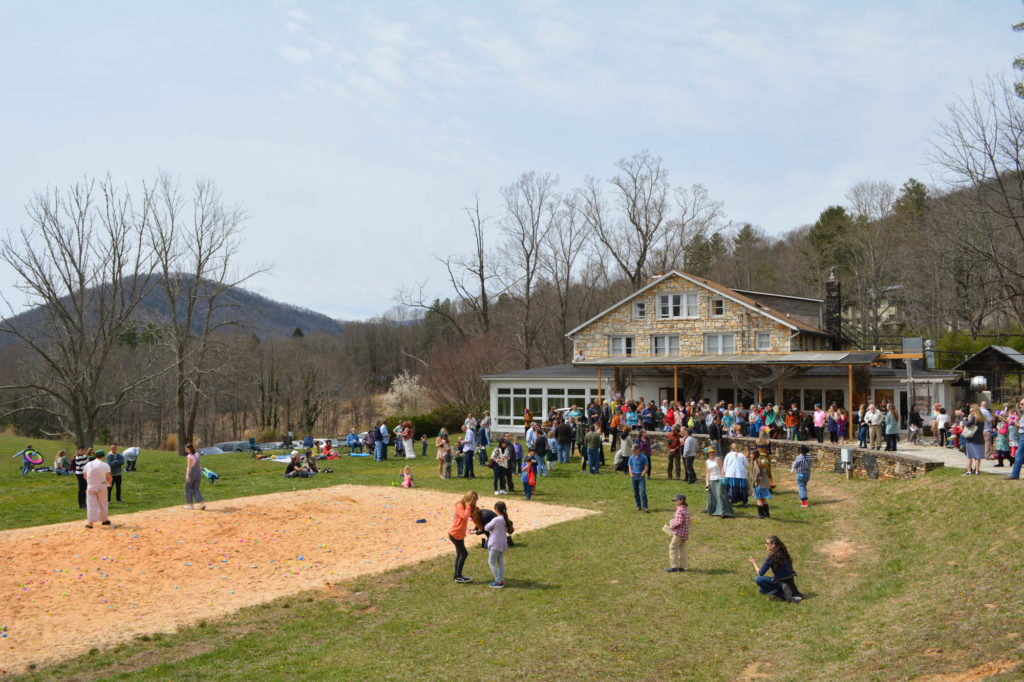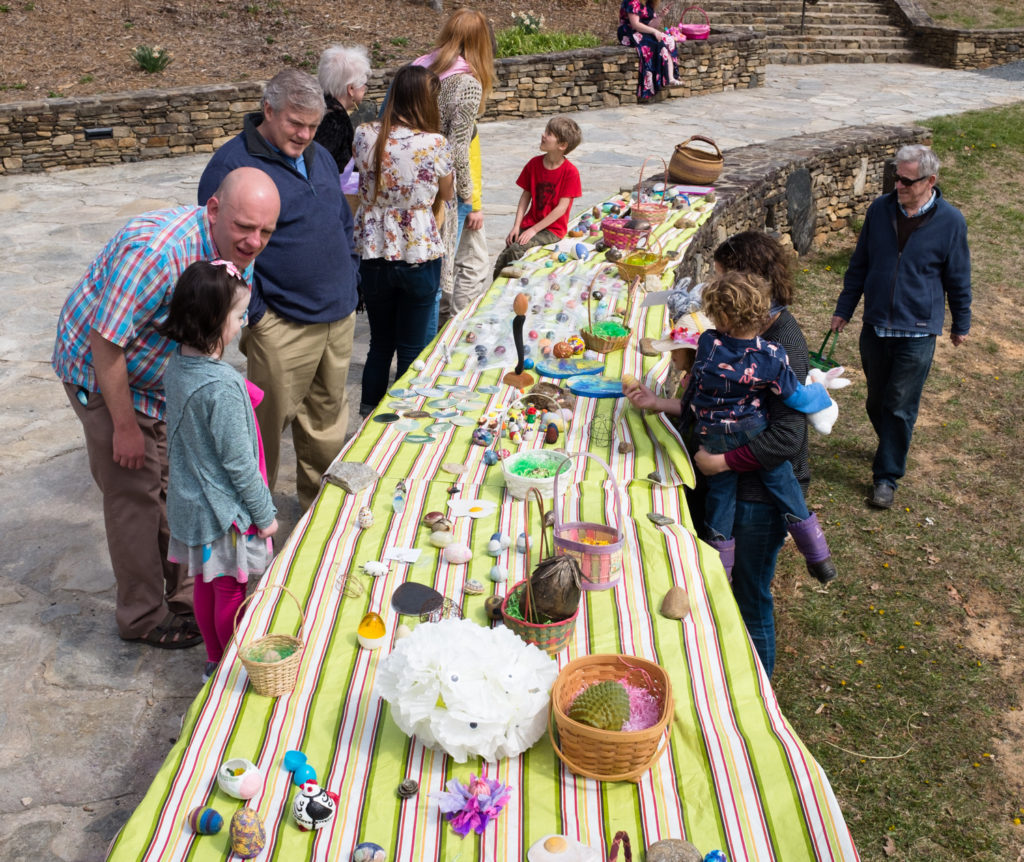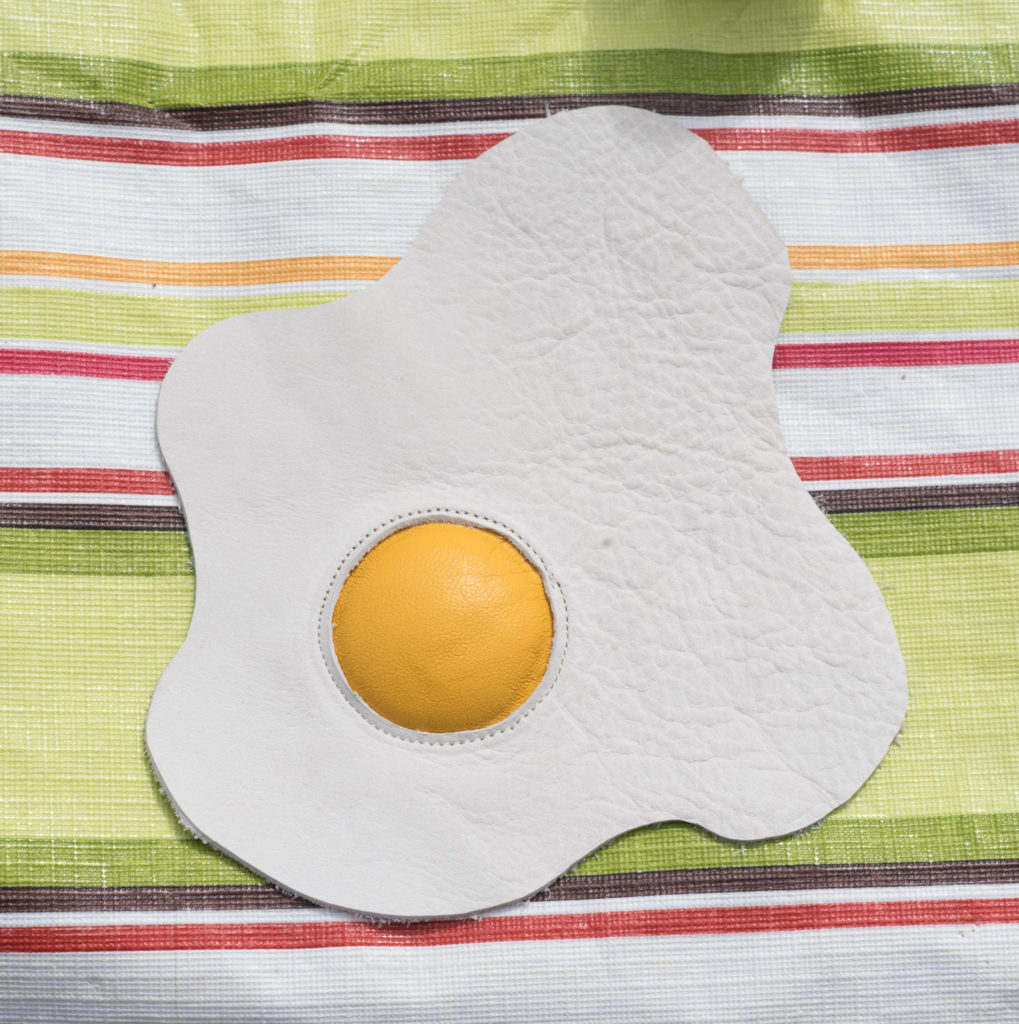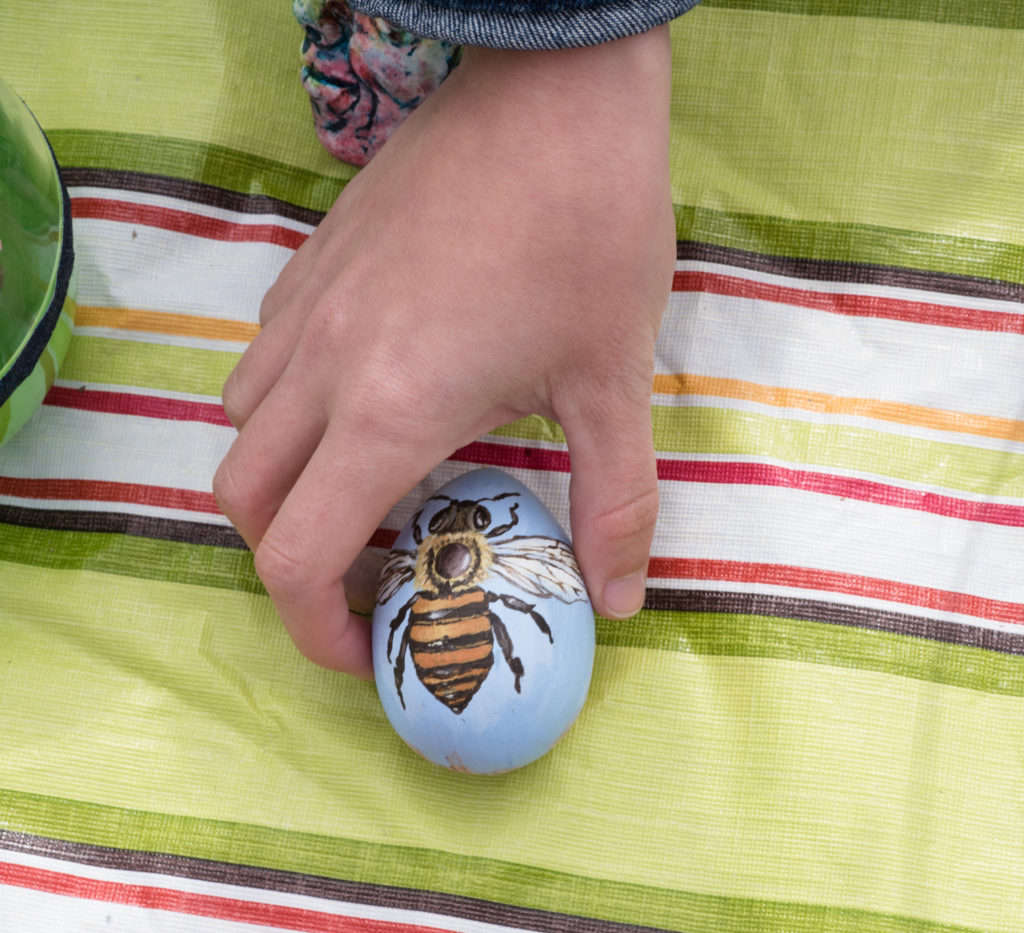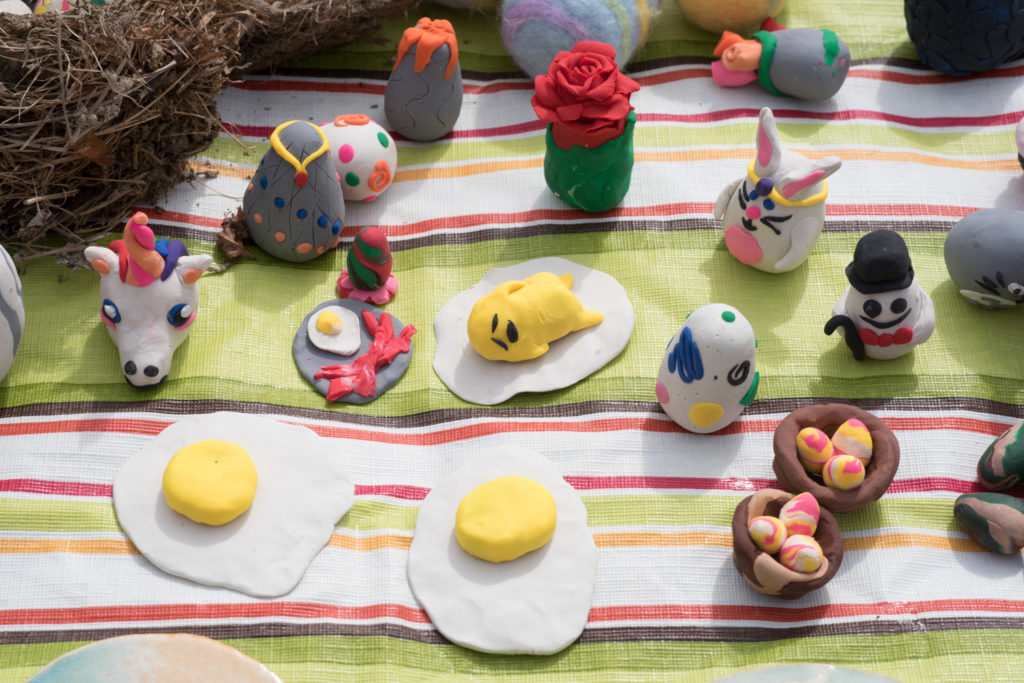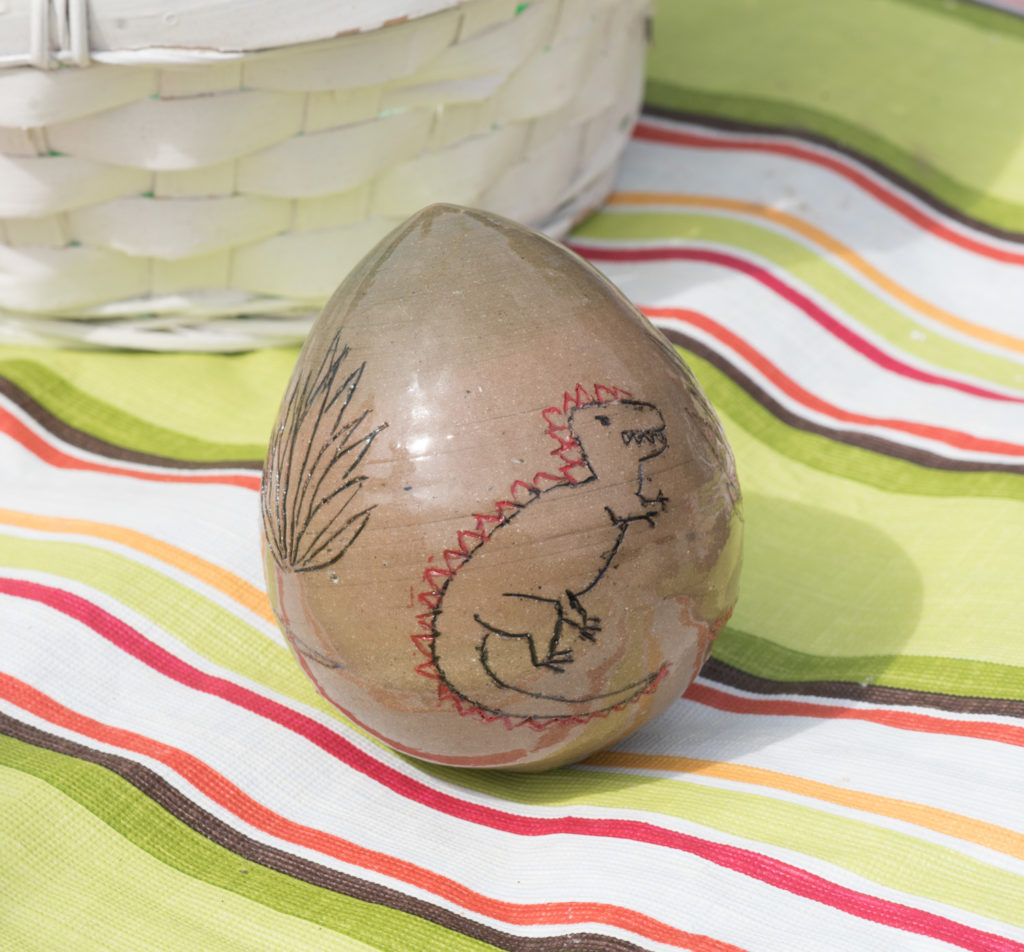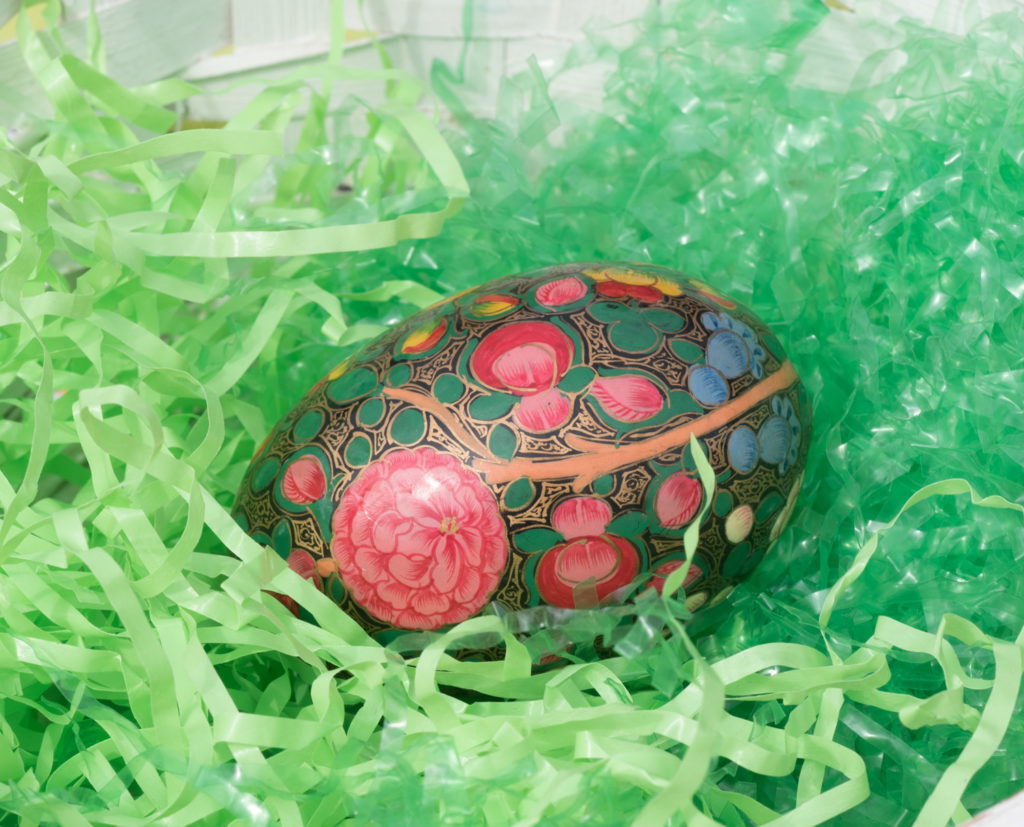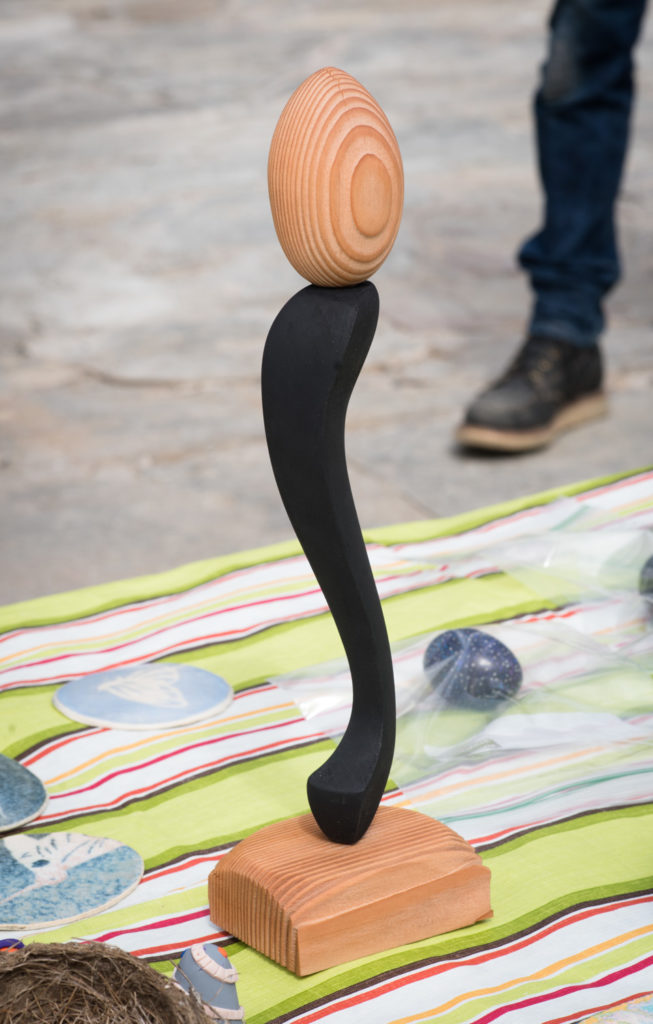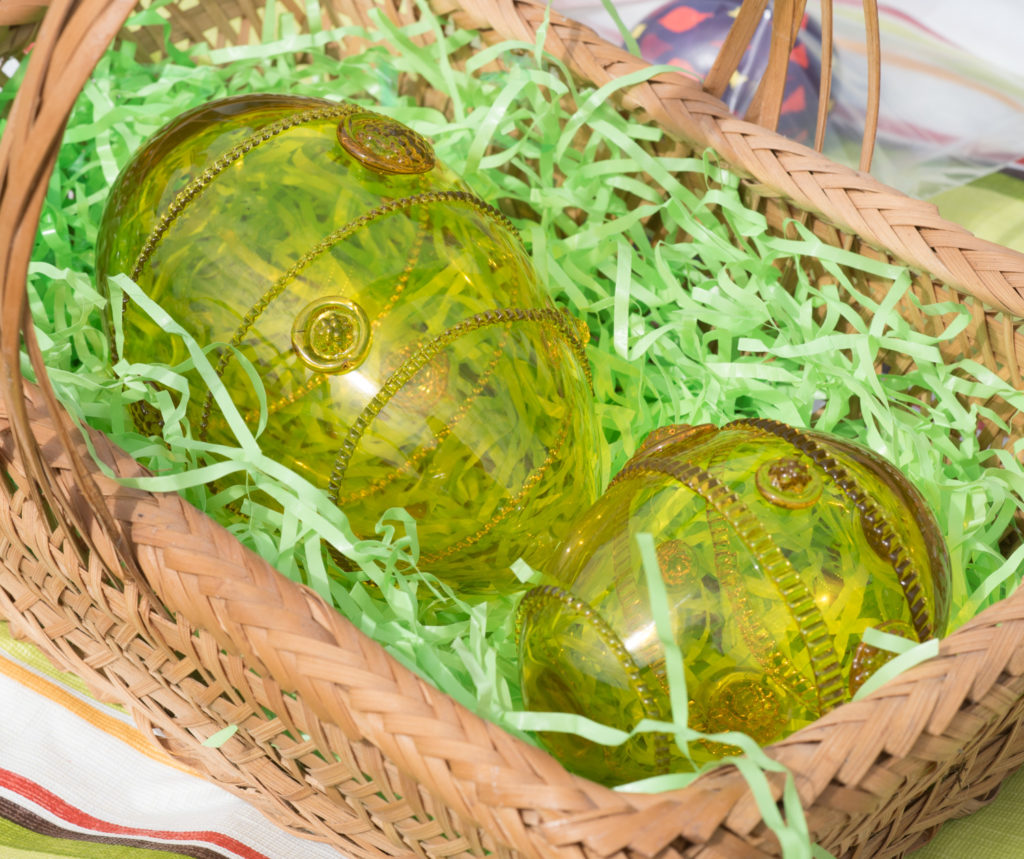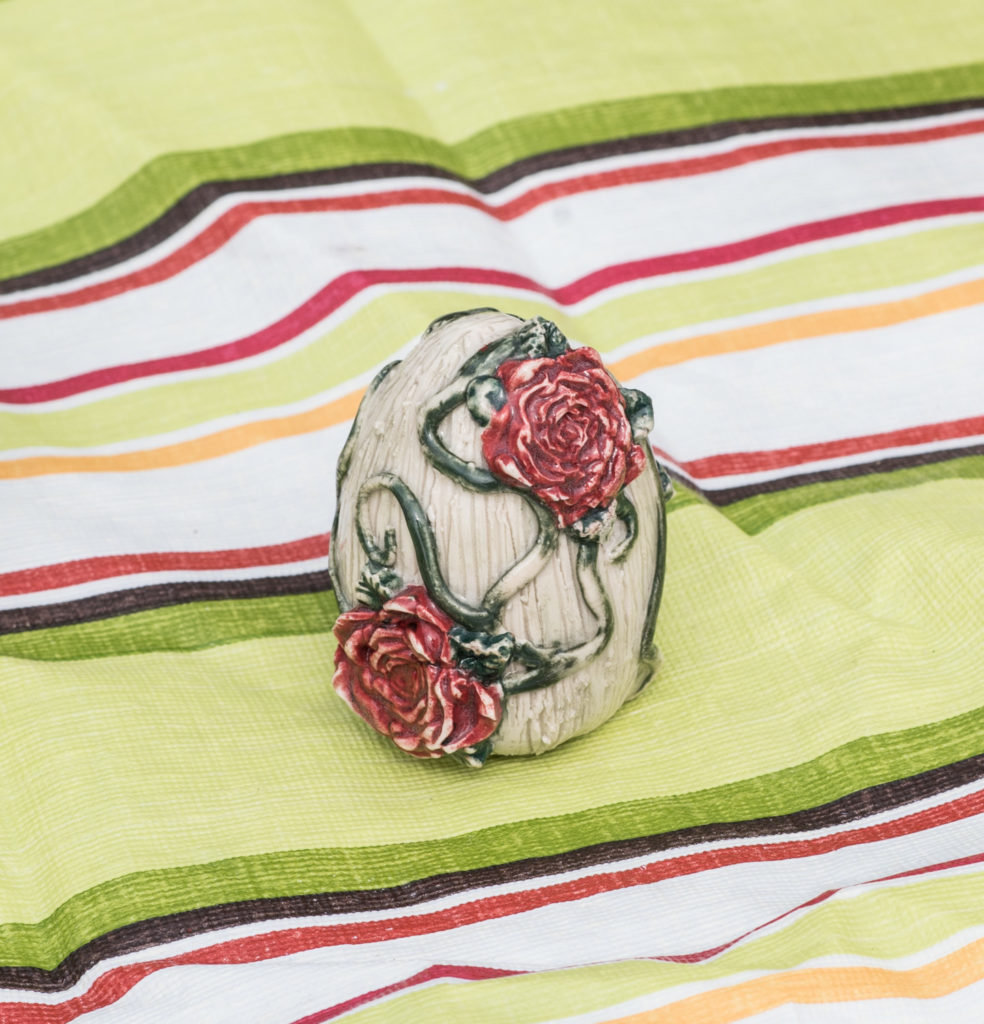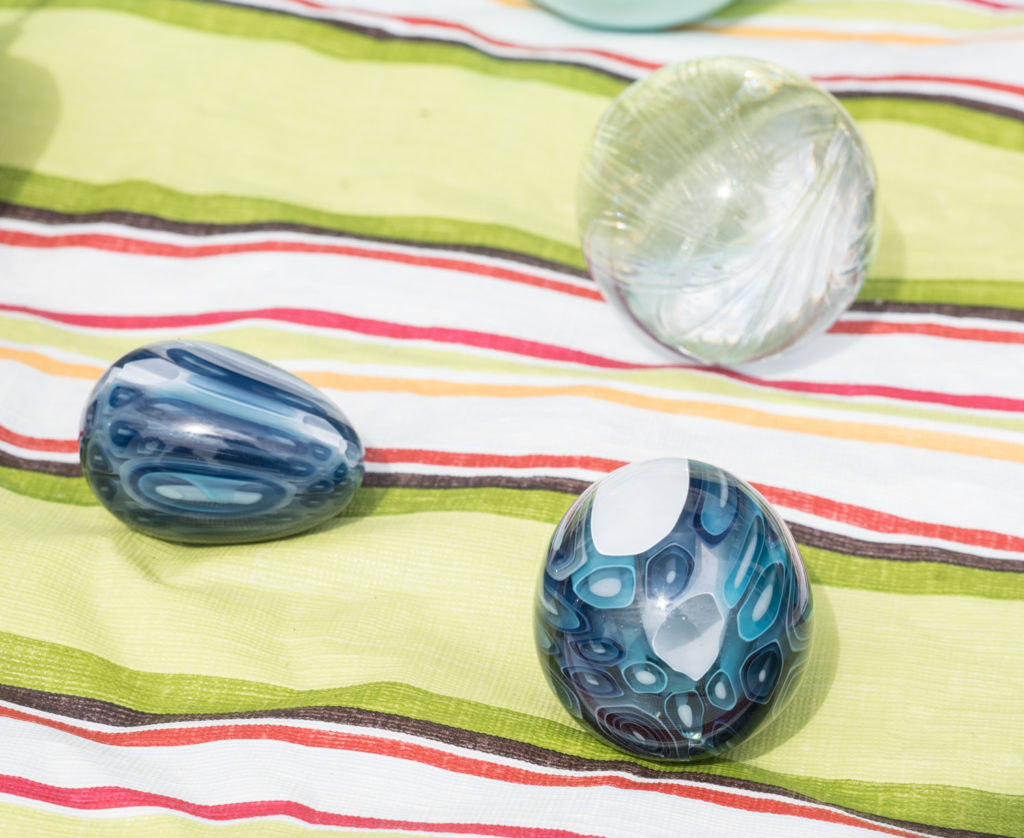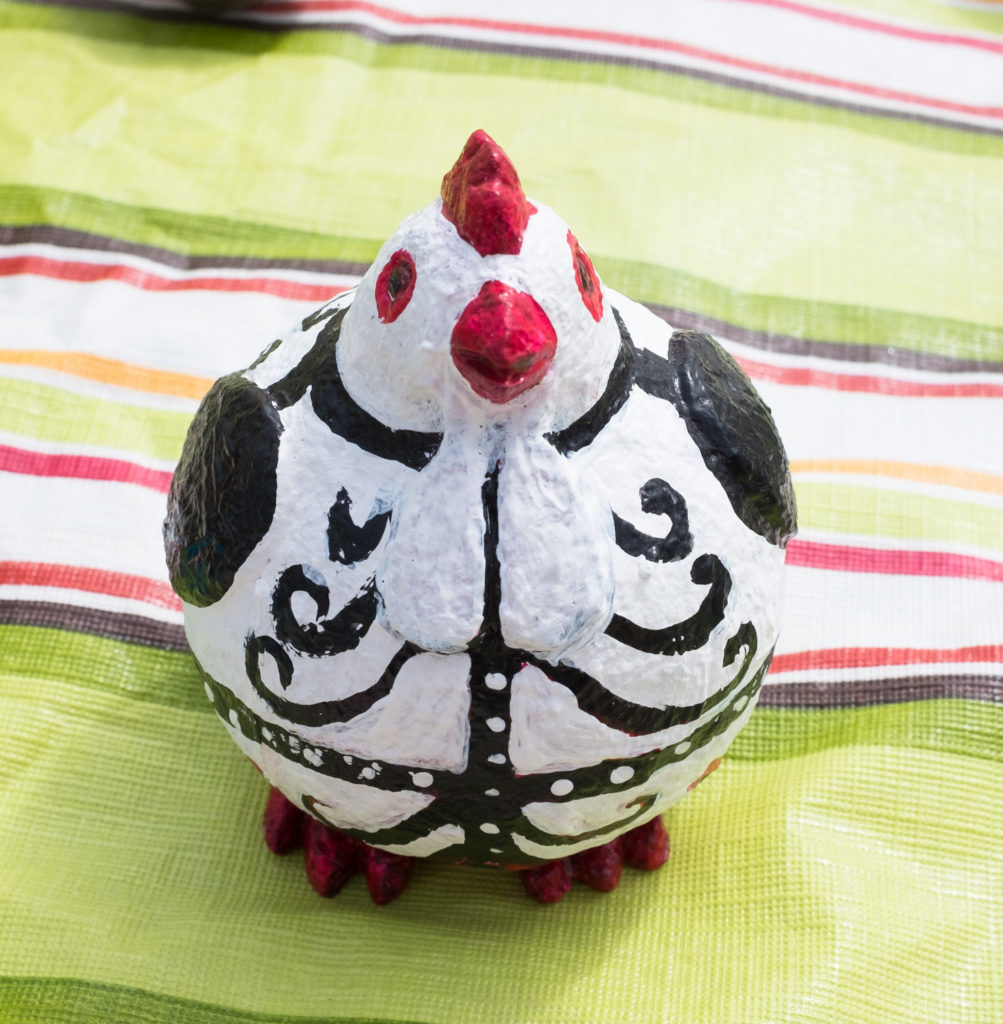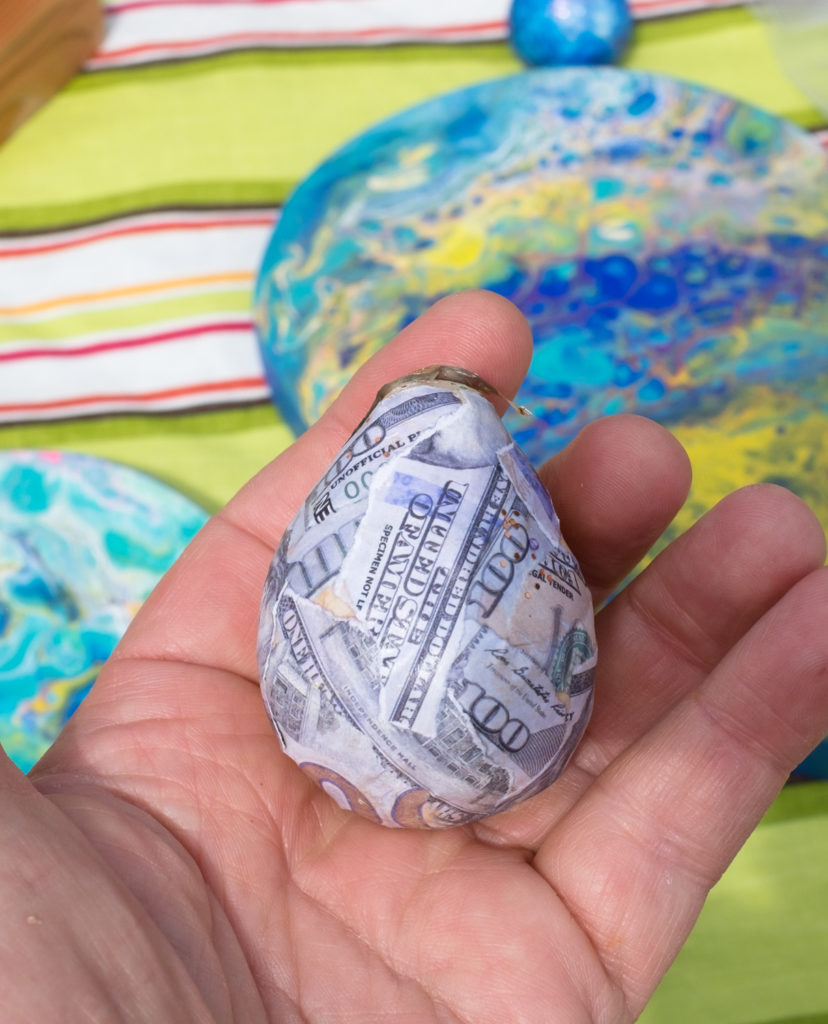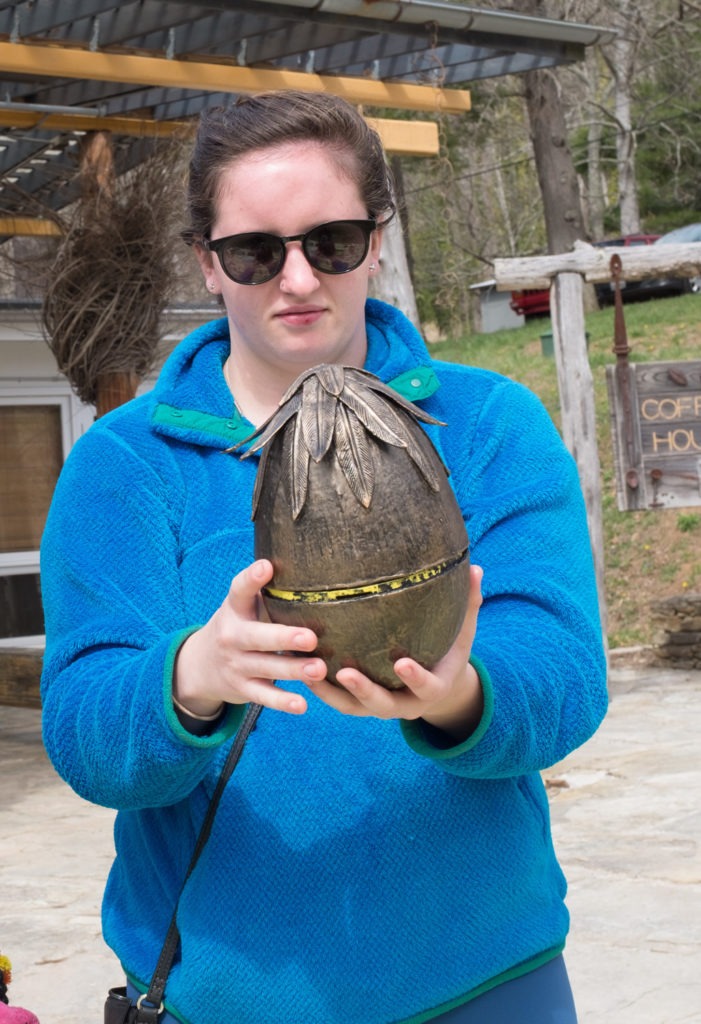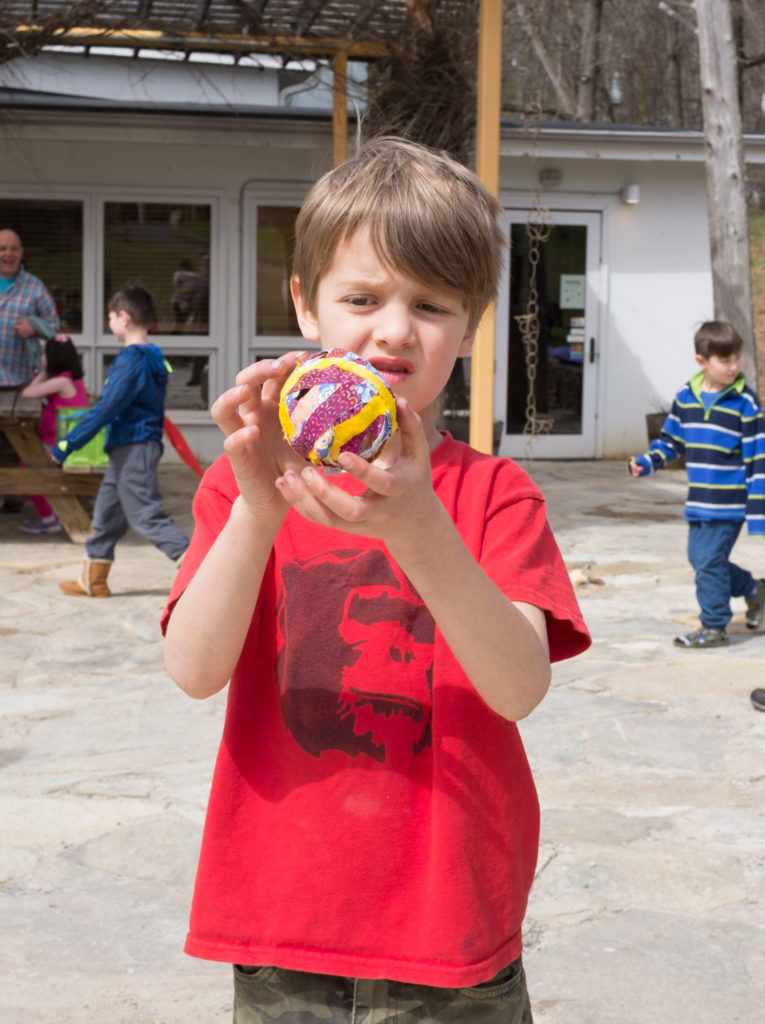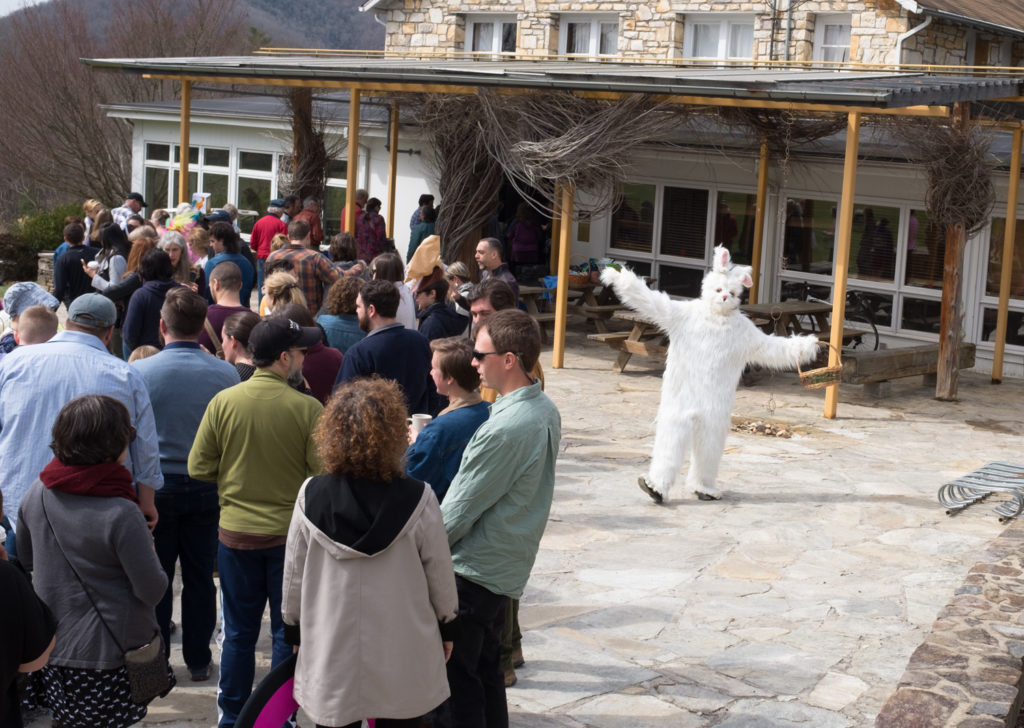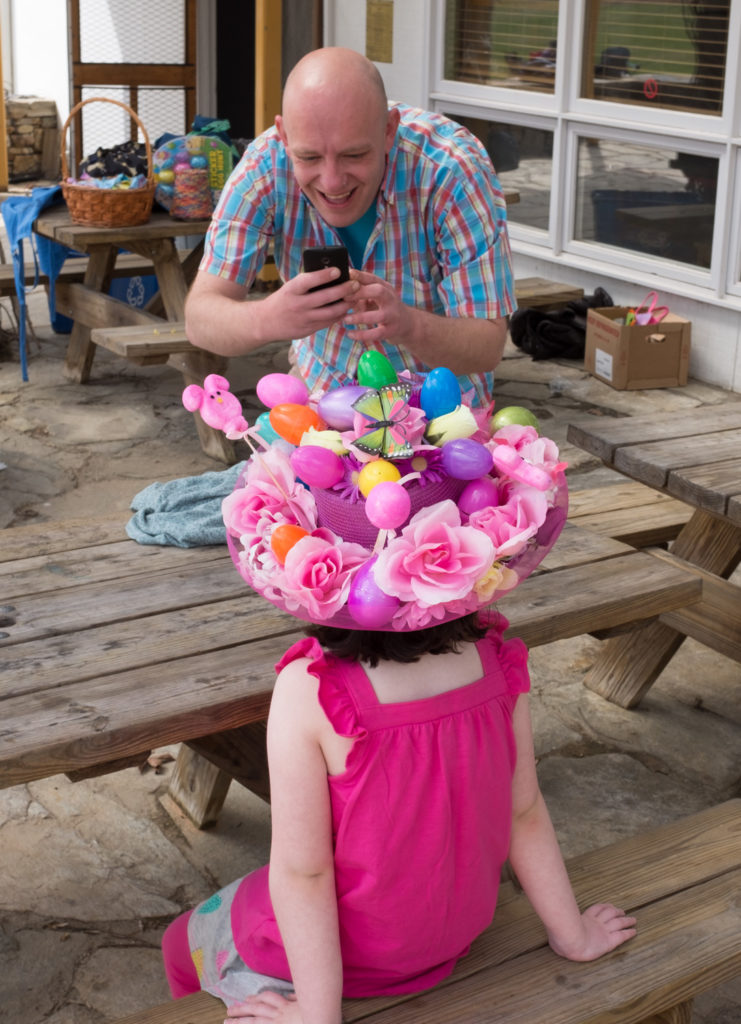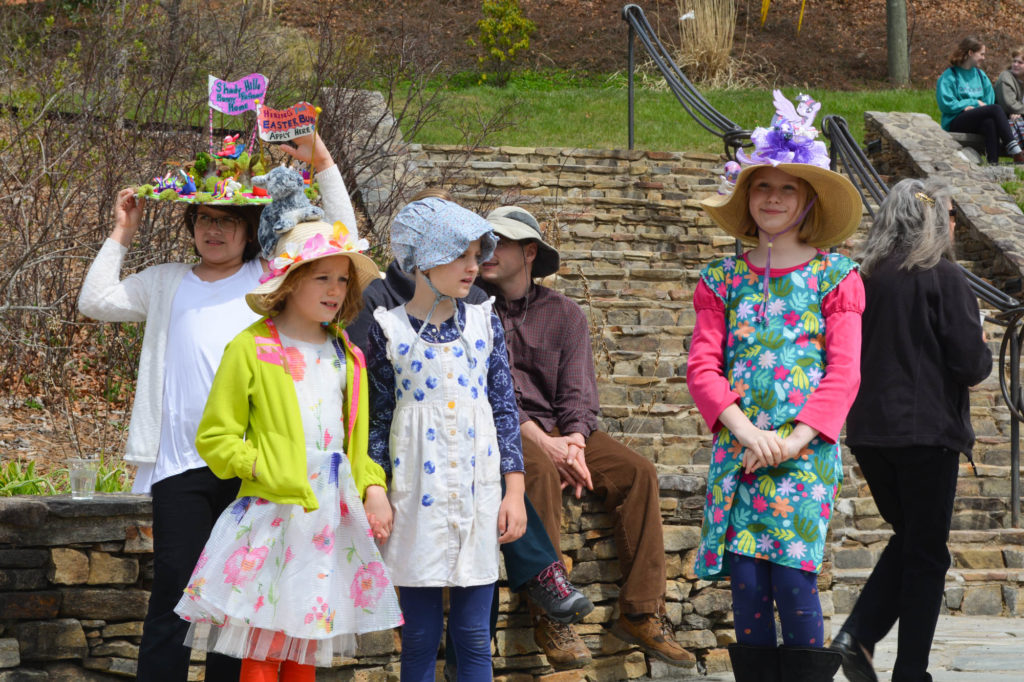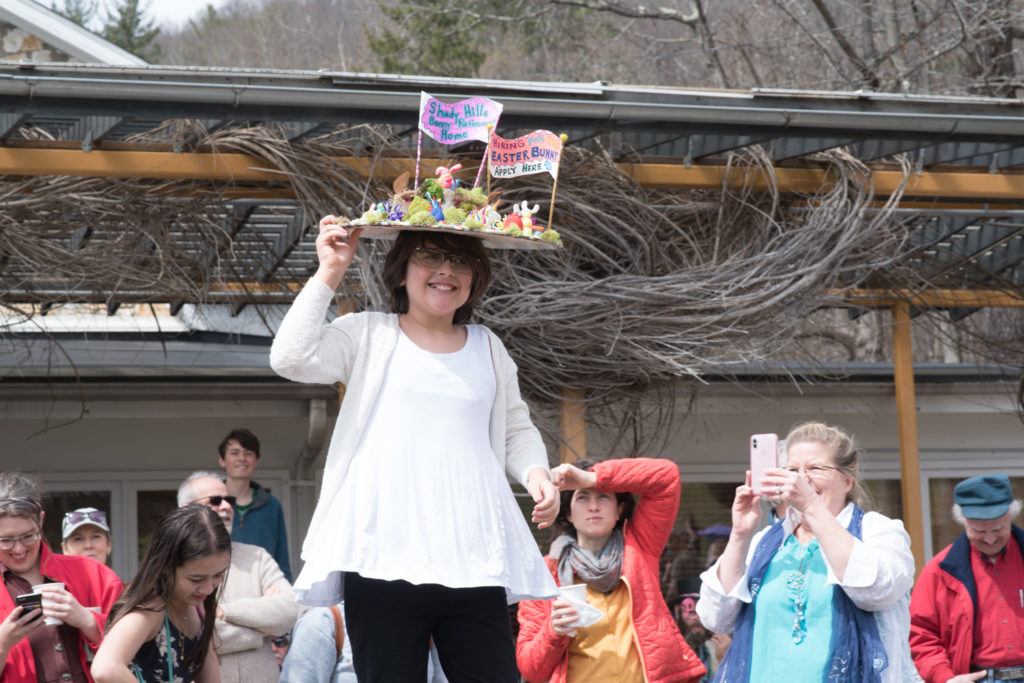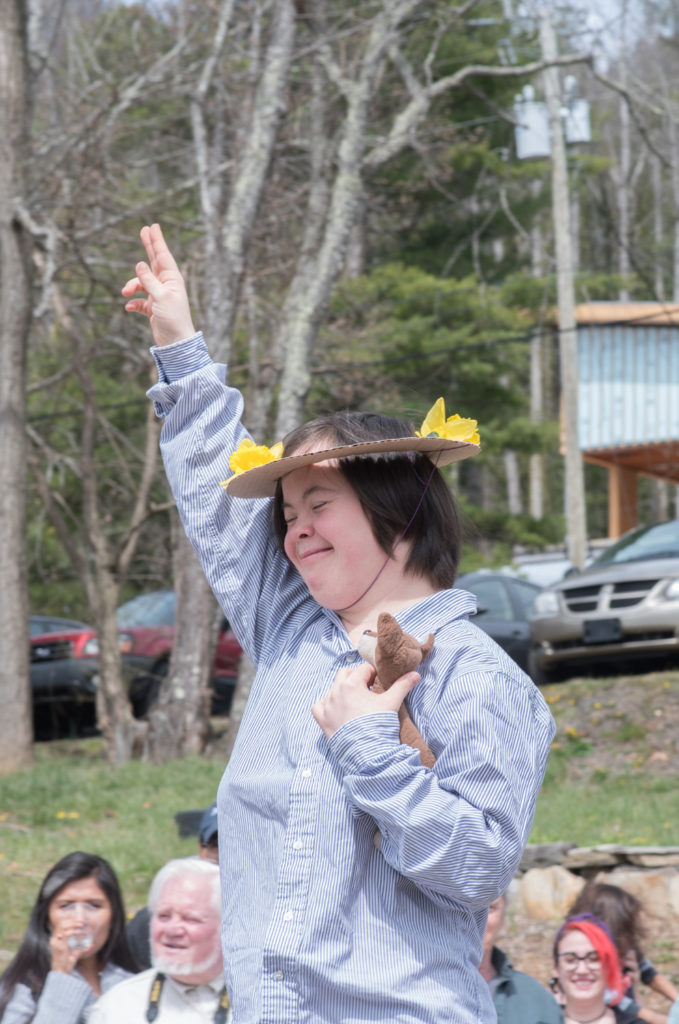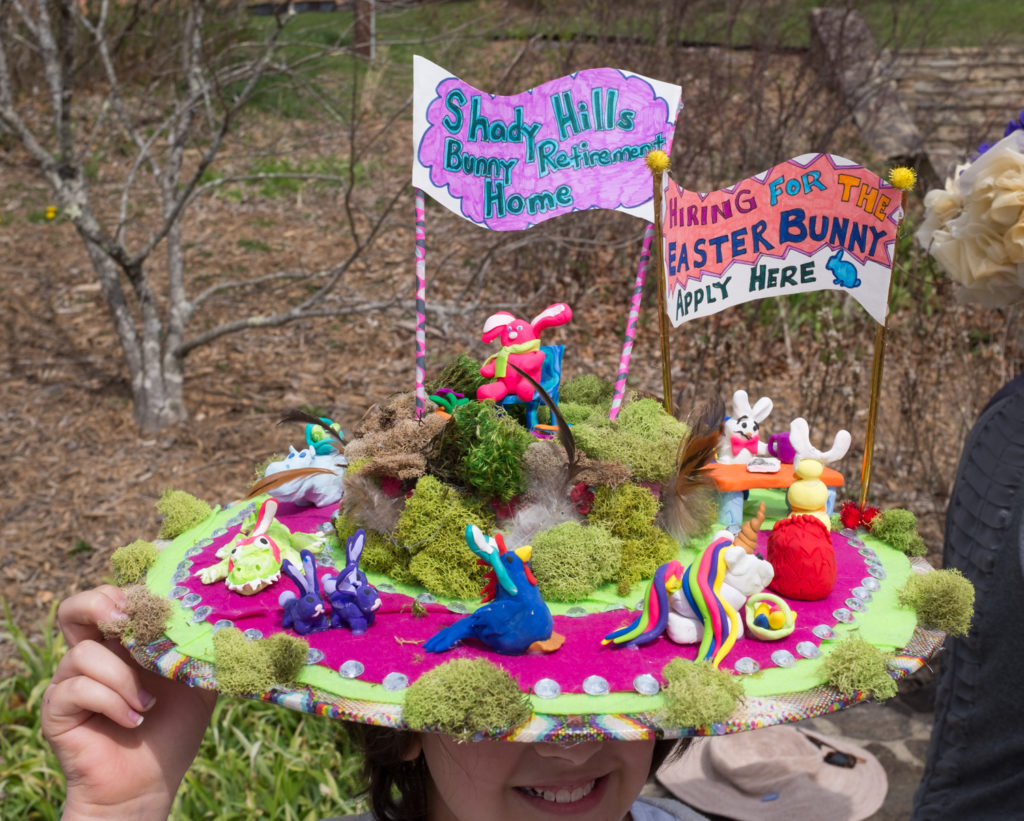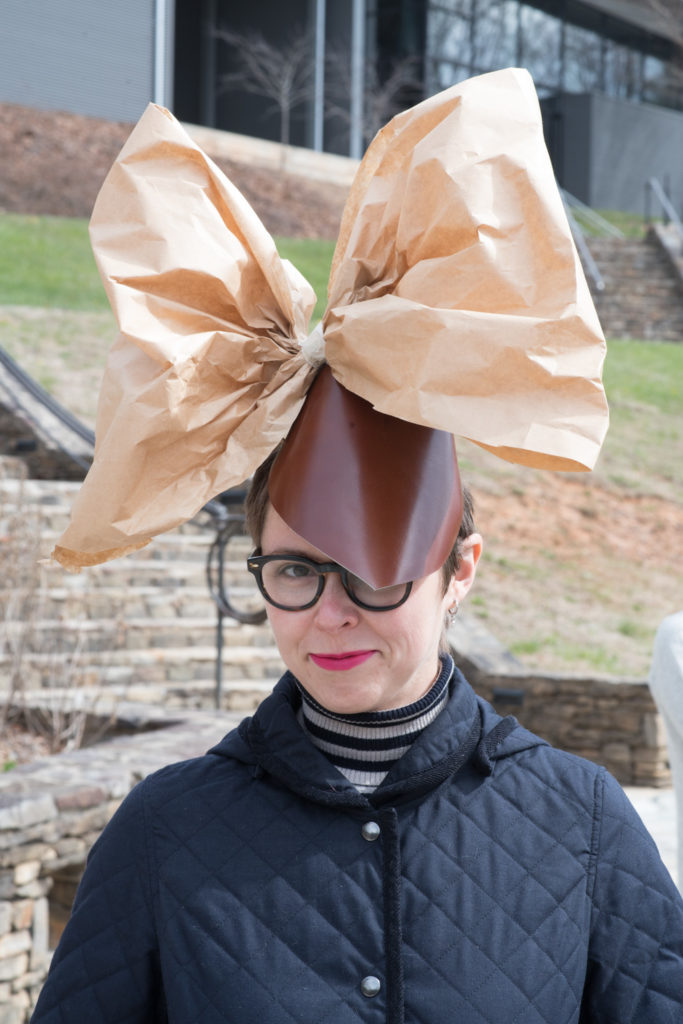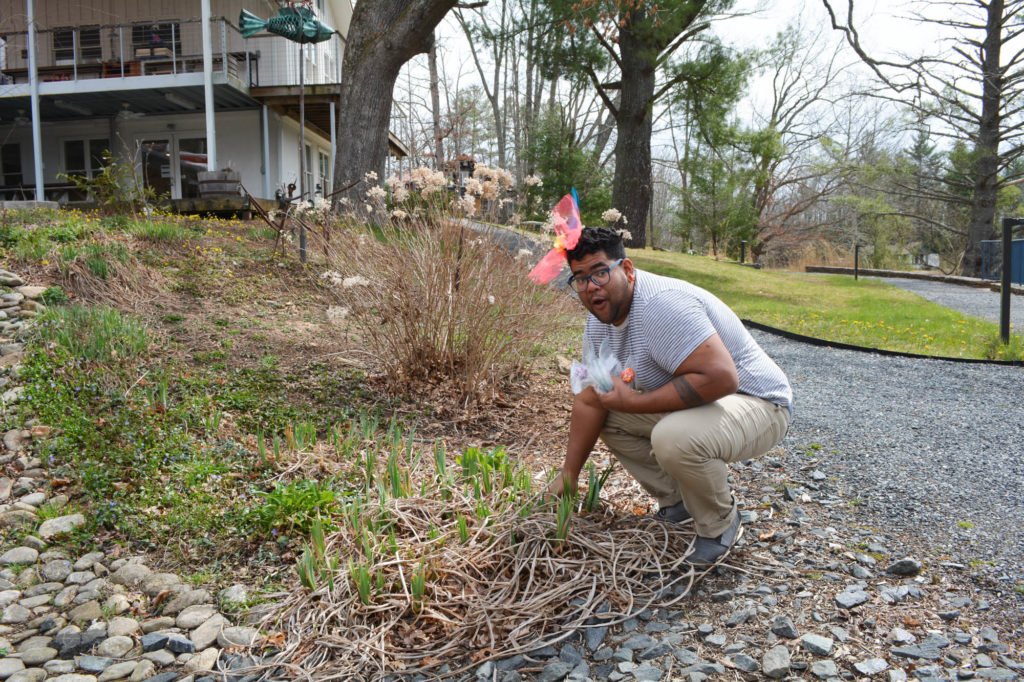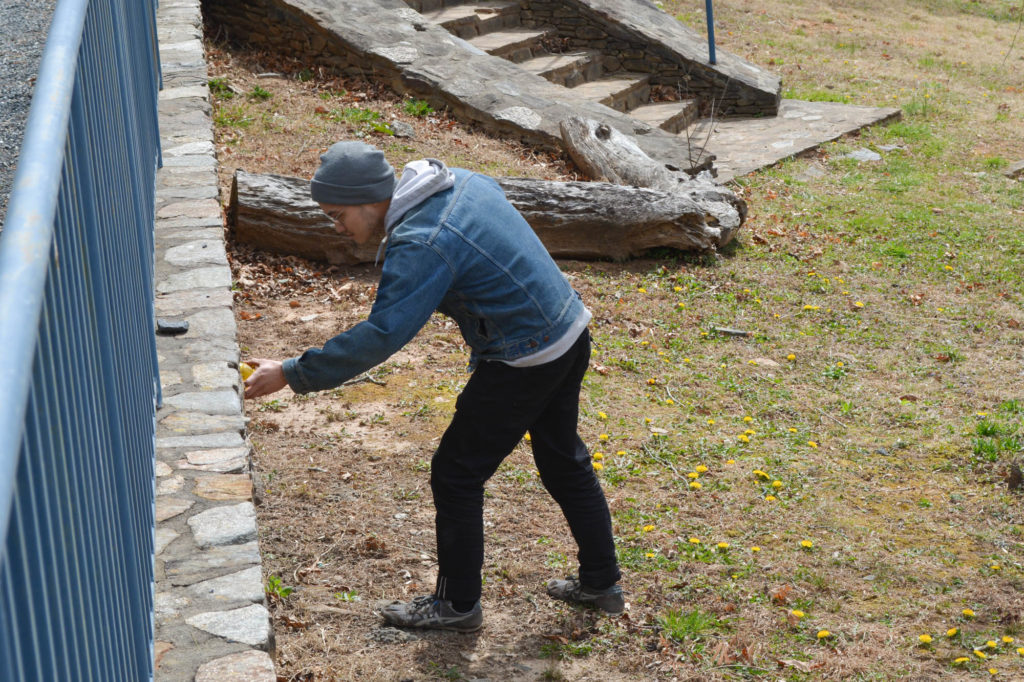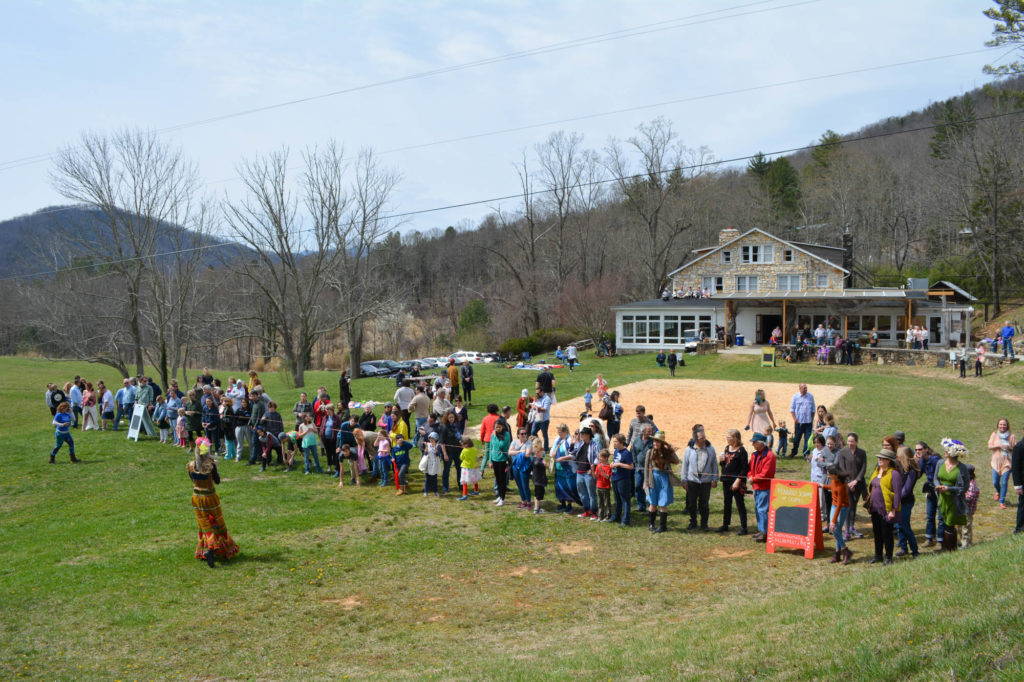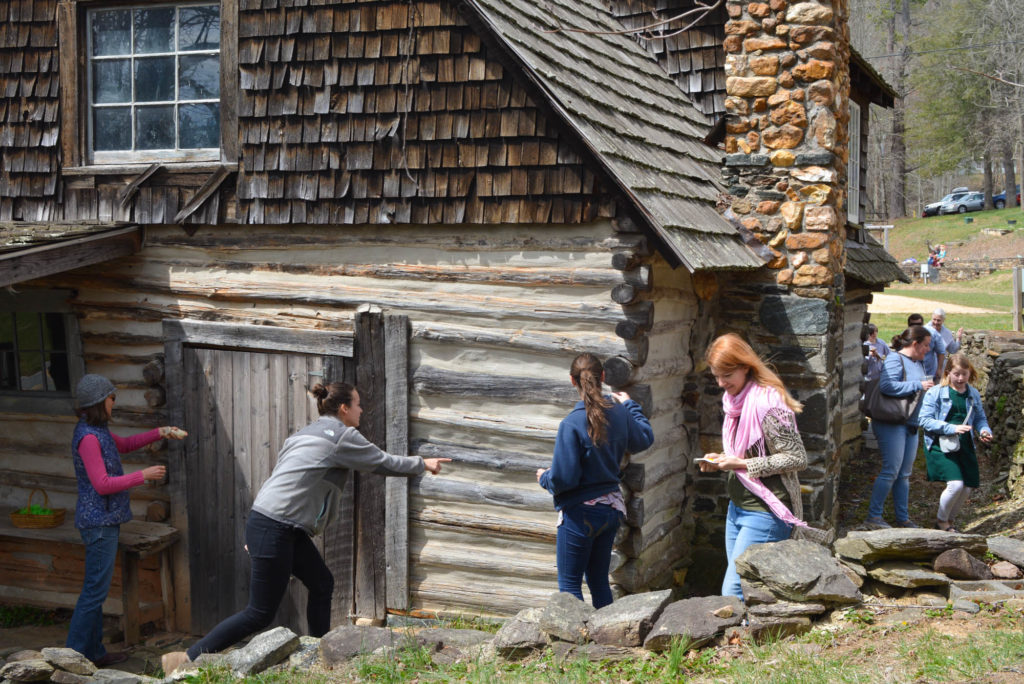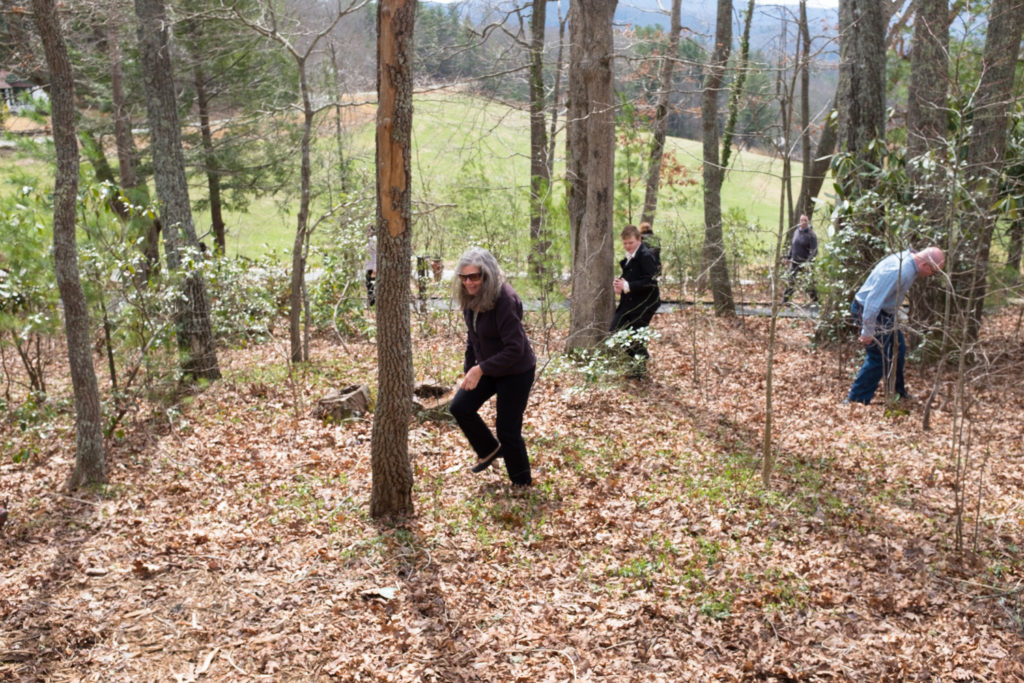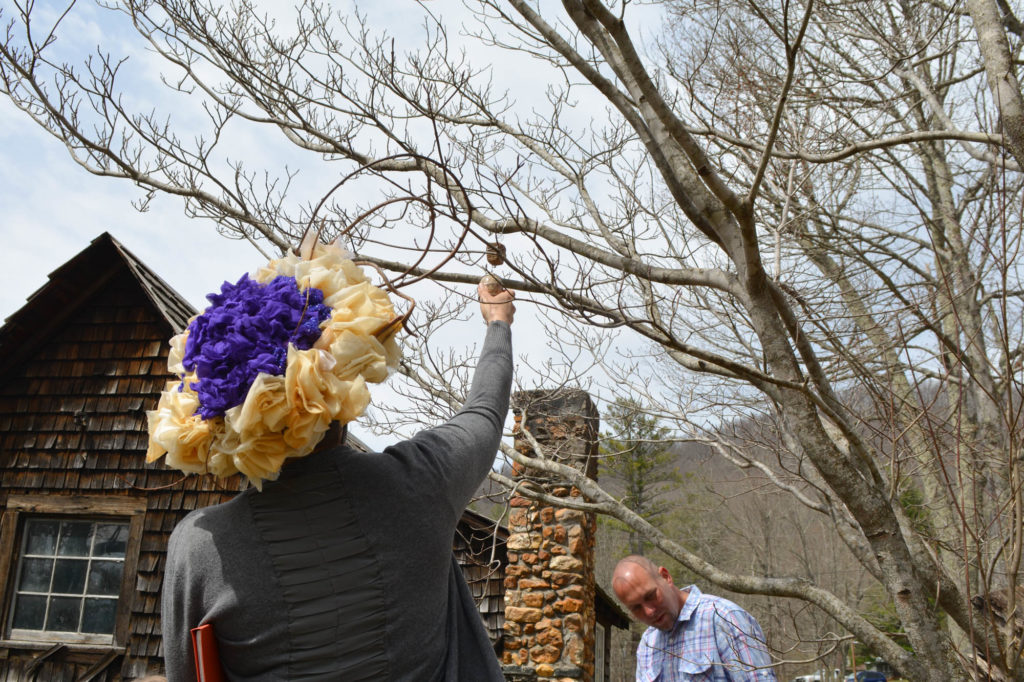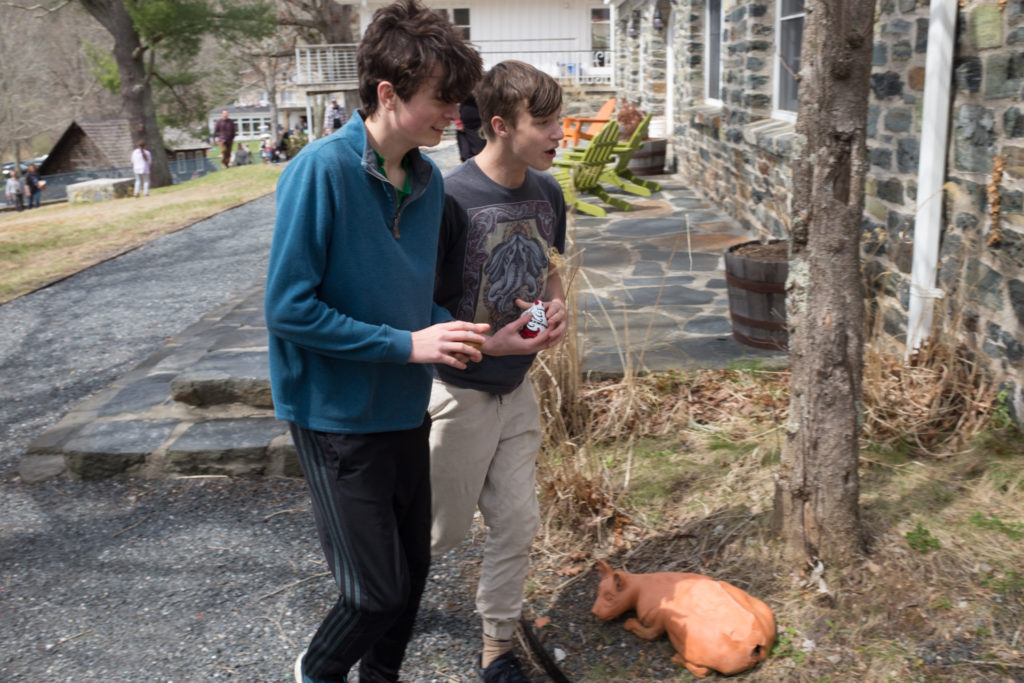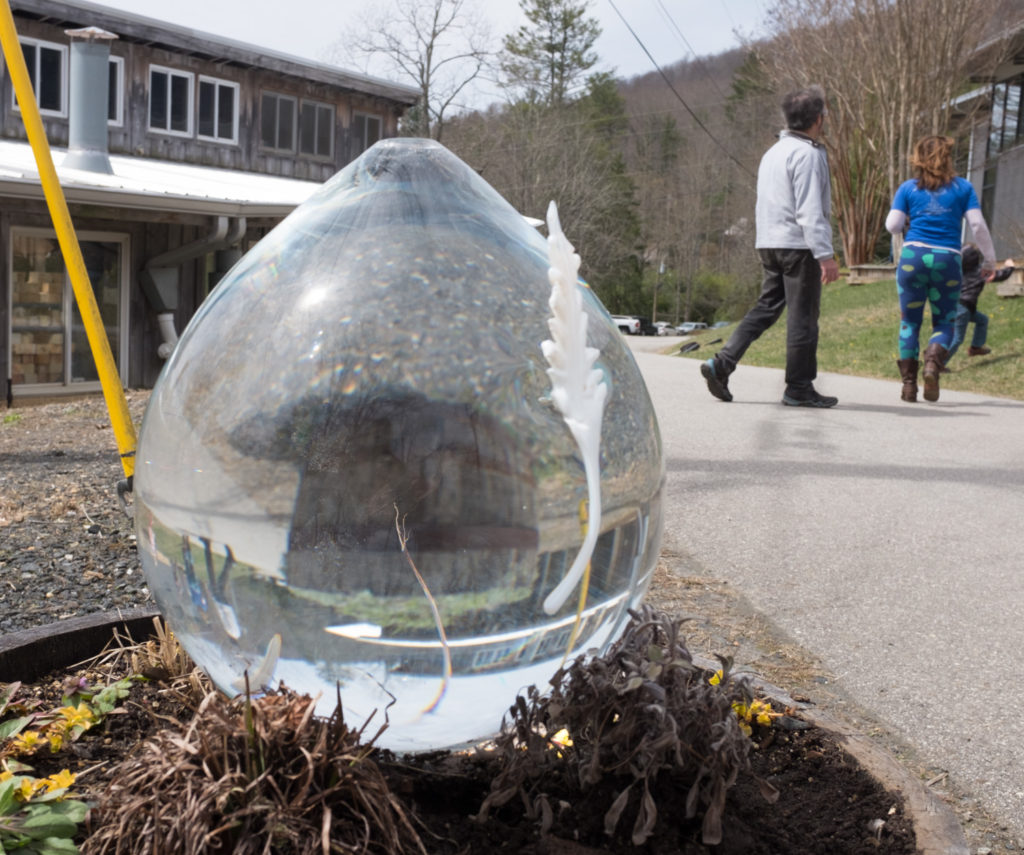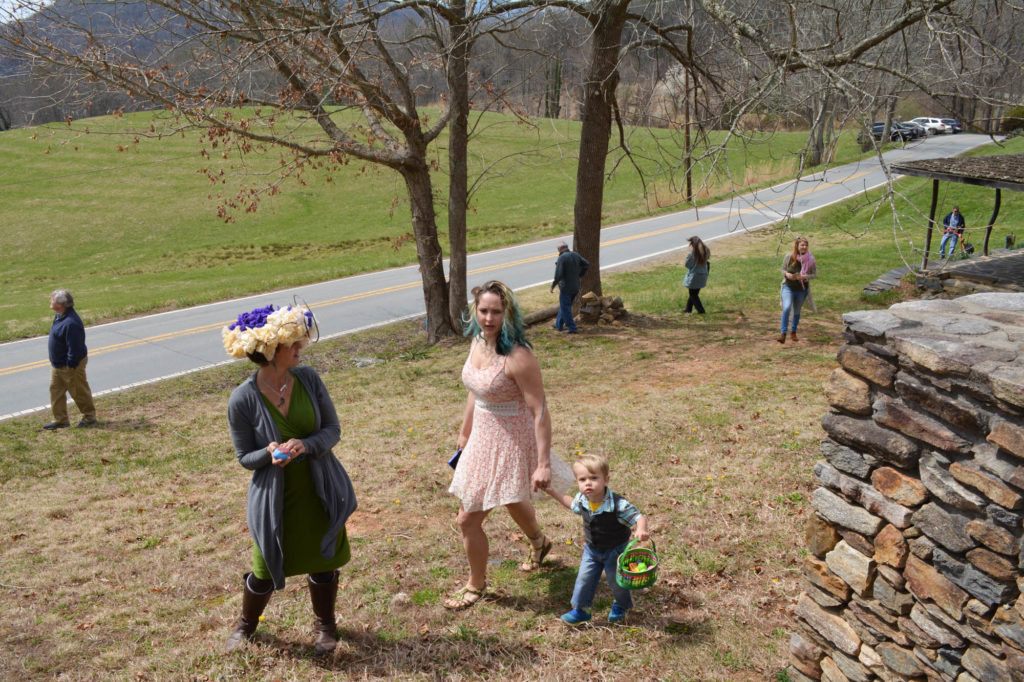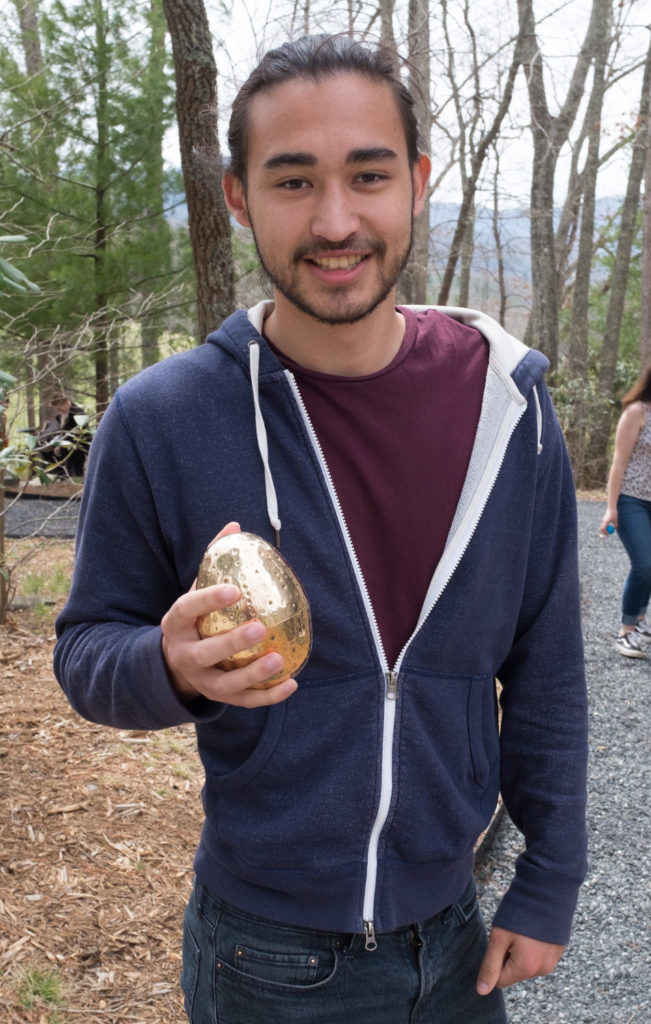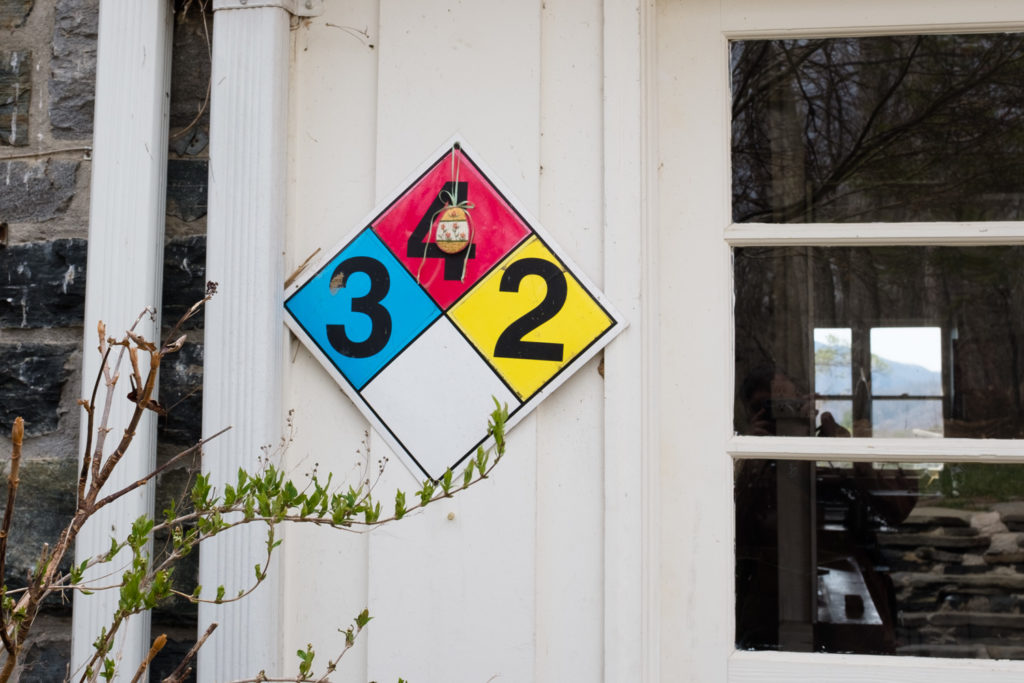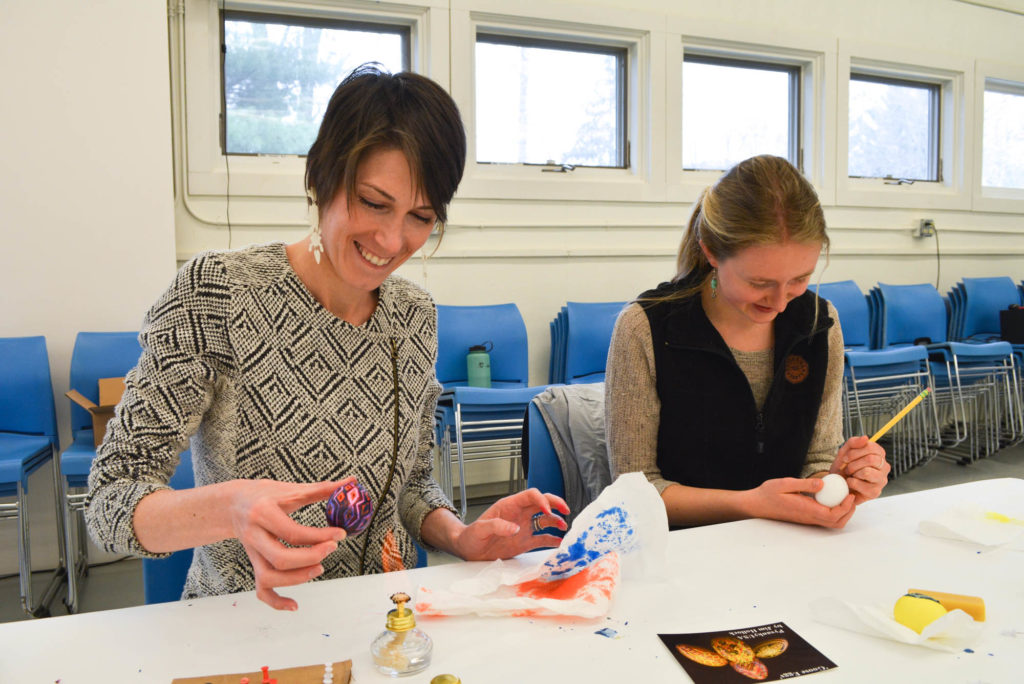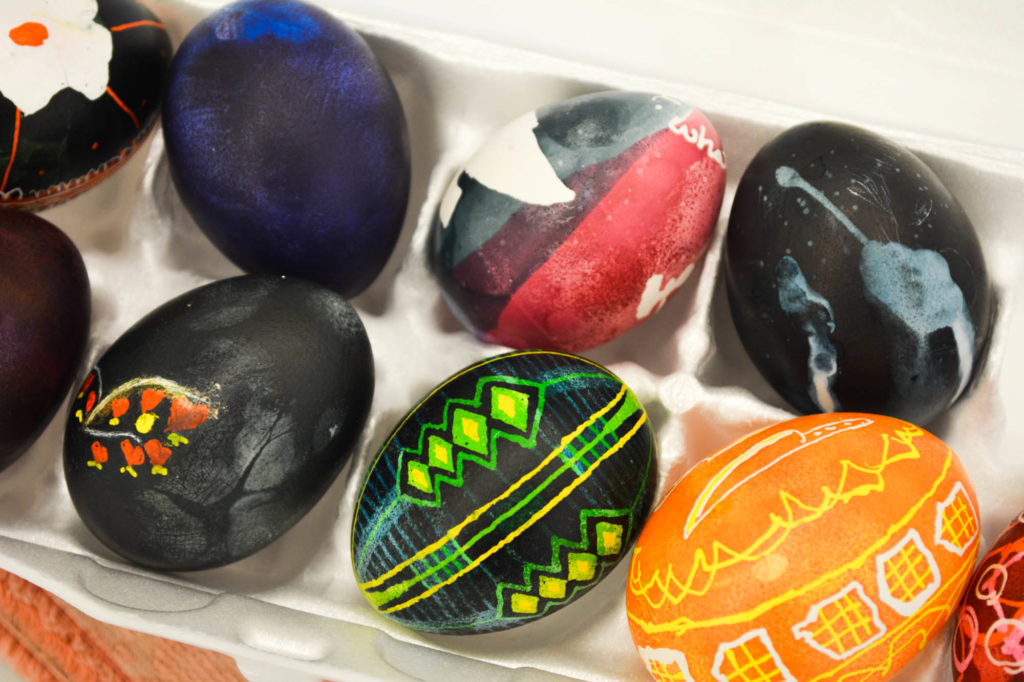Every summer, Penland celebrates the 4th of July much like the rest of the country—with picnics, with a parade, with fireworks. But when you get a whole community of creative people together, there are bound to be some extra quirks and flourishes that make the event memorable and uniquely “Penland.” This year was no different, thanks to the enthusiasm and flair of our students, instructors, staff, residents, and community. Here’s a look at some highlights from the most spirited day of the summer:
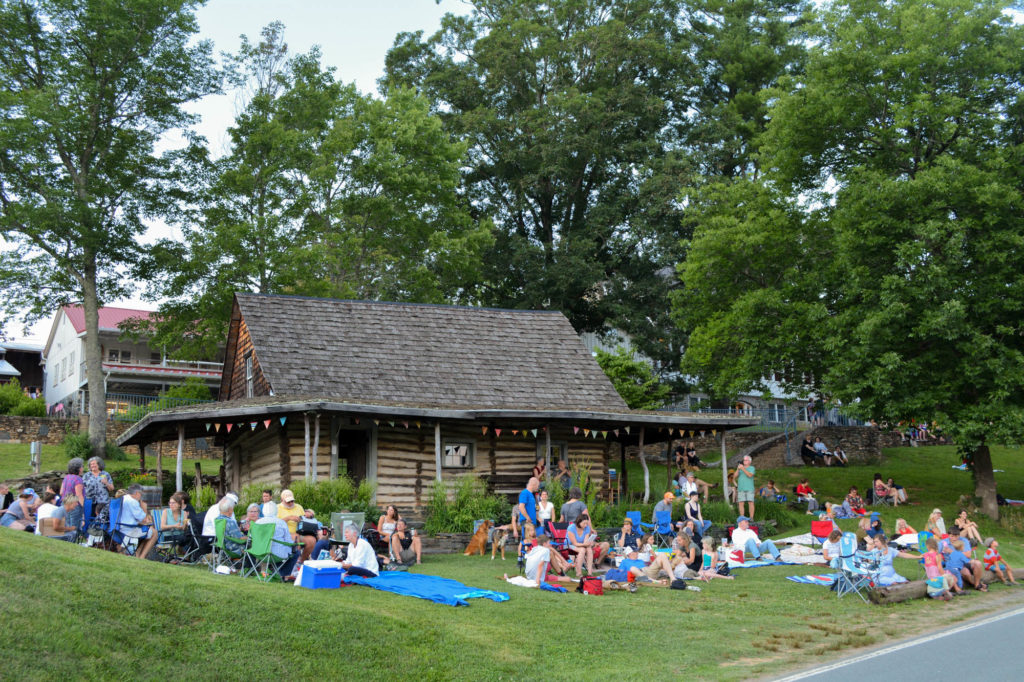
7:00 PM – Friends and families gathered on blankets and lawn chairs all along the road to chat, enjoy a picnic dinner or a drink, and wait for the festivities.
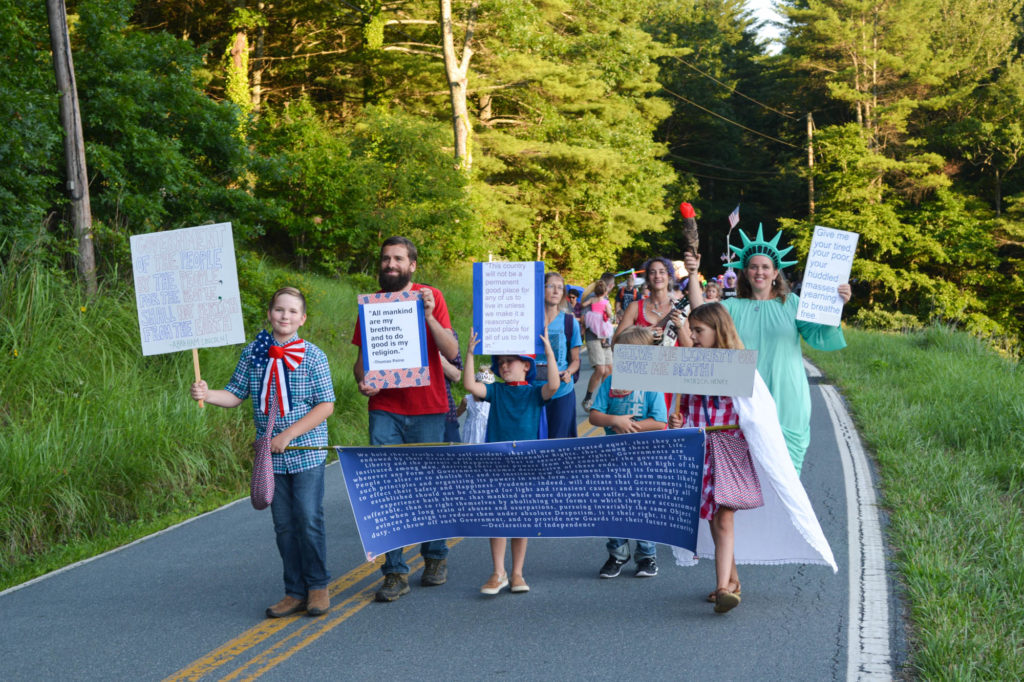
7:34 PM – Here comes the parade! A banner printed with the Declaration of Independence headed up this year’s procession, along with a Statue of Liberty costume, a pretty rad bowtie, and quotations from Abraham Lincoln, Thomas Paine, Theodore Roosevelt, and Patrick Henry.
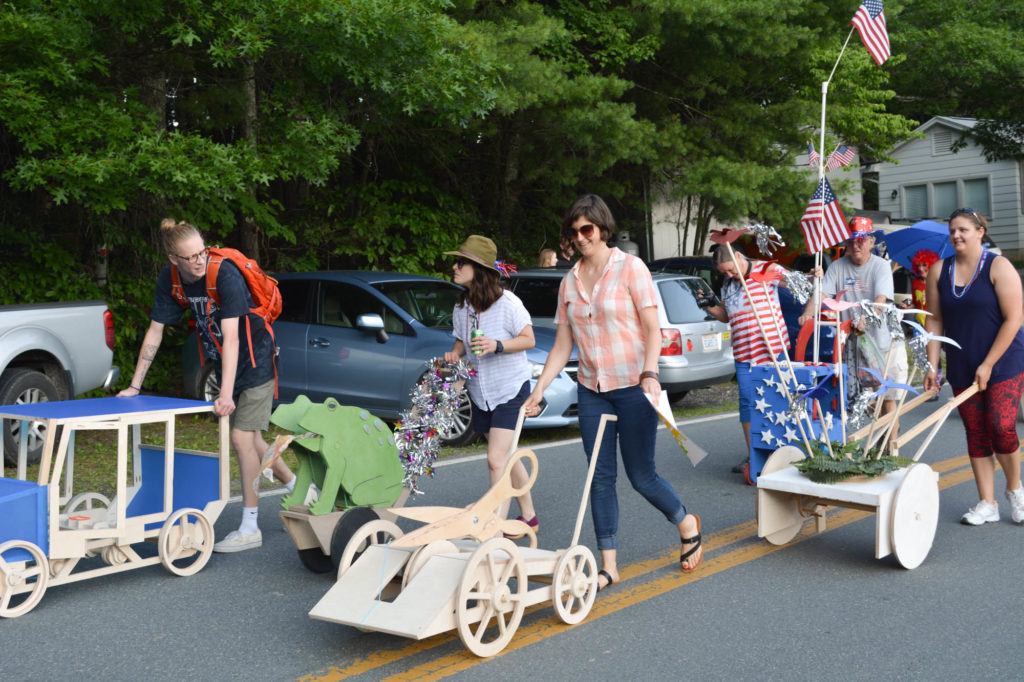
7:36 PM – Matthew Hebert’s wood students came marching by with the kinetic plywood sculptures they designed and made this session. There were snipping scissors, a frog with a moving tongue, a stove with flames that swirled as it rolled, an Uncle Sam statue with gesticulating arms, and more.
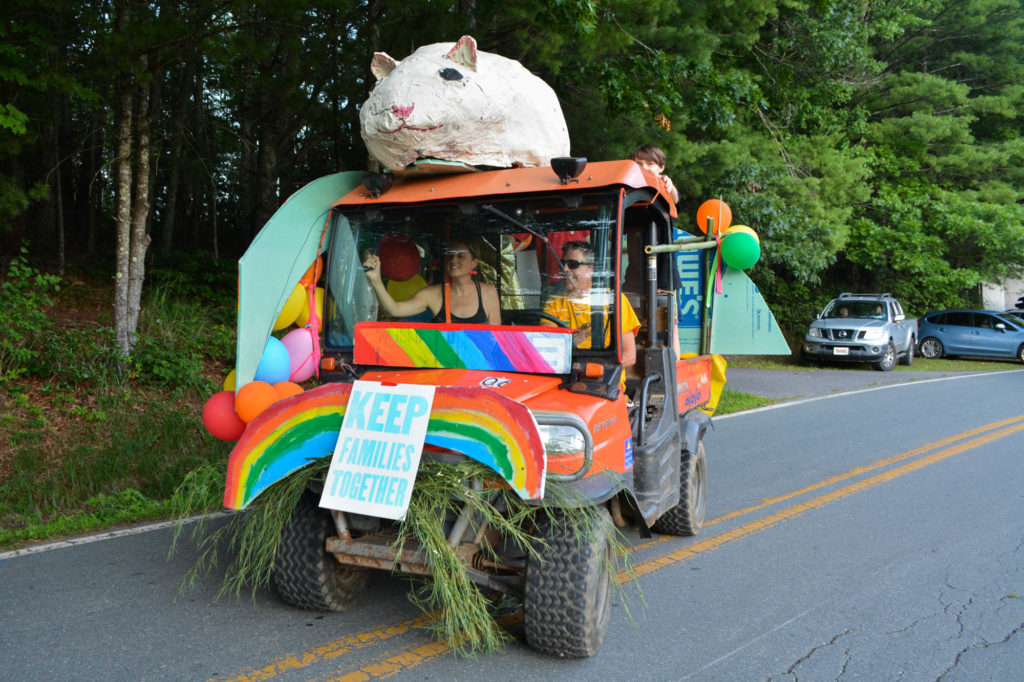
7:40 PM – This epic float with rainbows and a giant hamster came rolling down the road. Parade entries are a reflection of the passions and priorities of Penland’s community, and pride and “Keep families together” were both recurring themes this year.

7:47 PM – The impressive La Llorona float, a joint effort between Martin Mazorra’s letterpress workshop and Jay Ryan’s screenprinting students, made its way past the knoll. This crew was also responsible for many of the gorgeous posters that were part of this year’s parade.
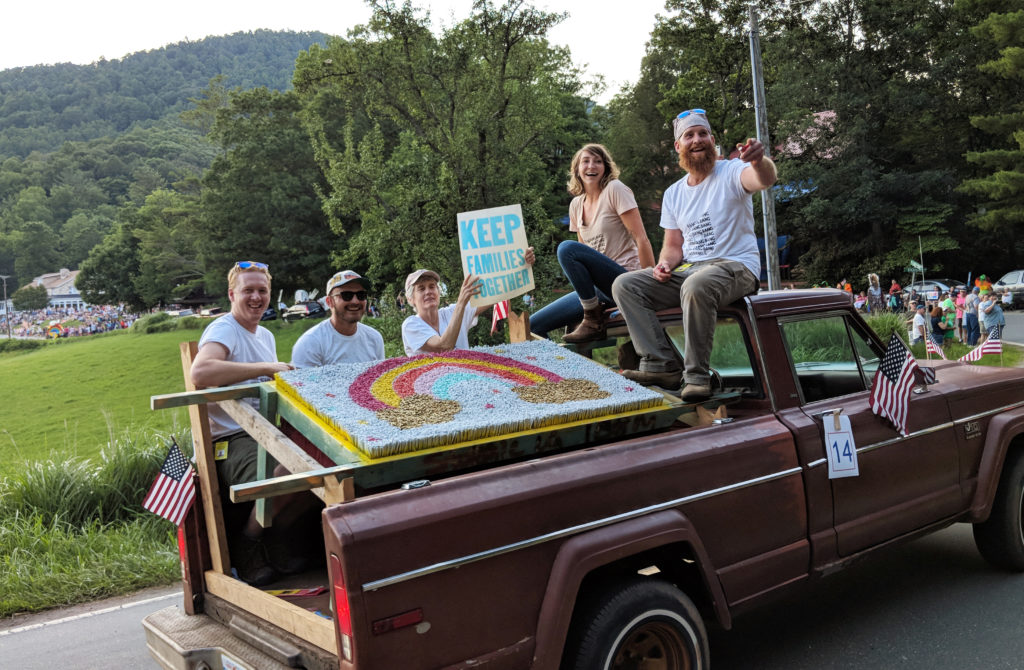
7:54 PM – Penland’s facilities and grounds crew (aka fireworks show magicians) brought up the rear of the parade, along with 20,000 bottle rockets decked out in their rainbow finery.
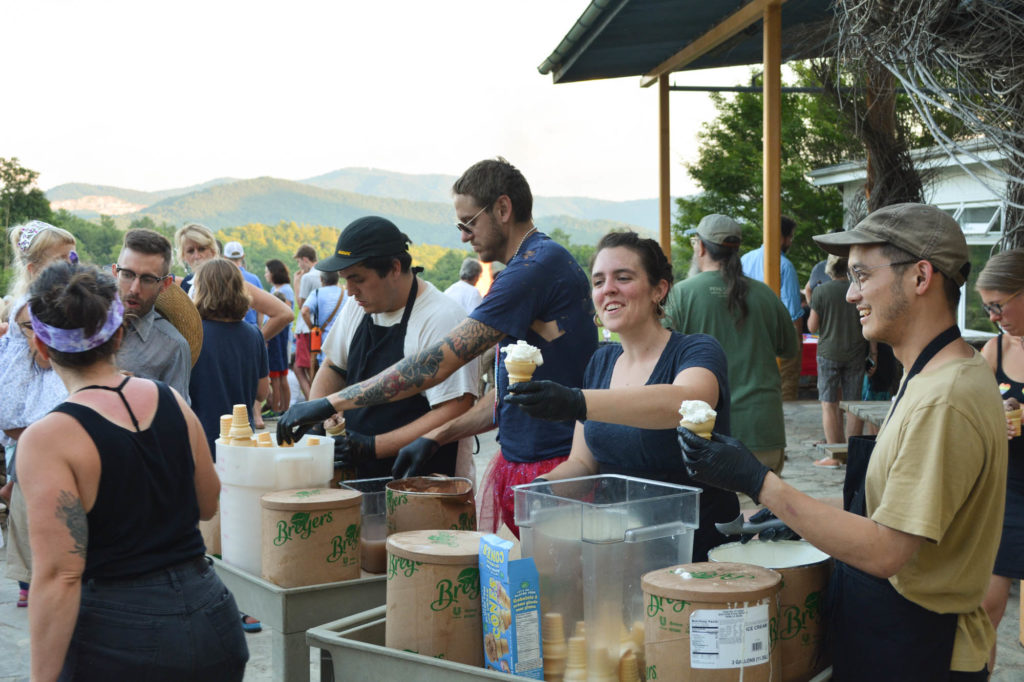
8:08 PM – Two big carts of vanilla and chocolate ice cream rolled out onto the Pines Portico, and a team of heroic core fellows started speed scooping.
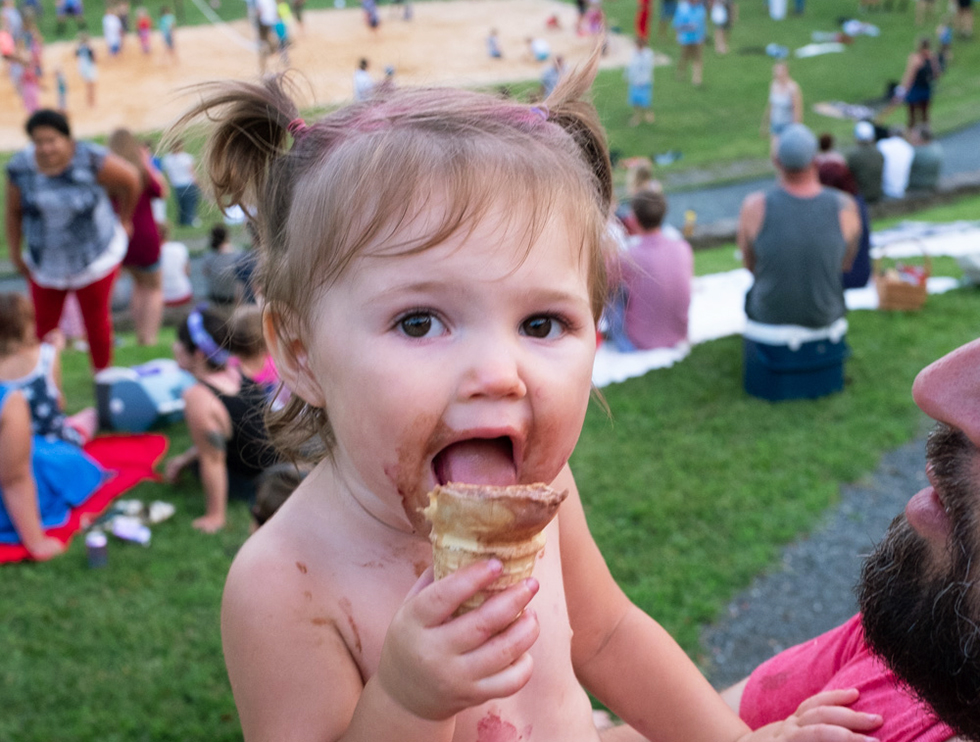
8:10 PM – The youngest members of the Penland community showed us all how to truly enjoy a cone.
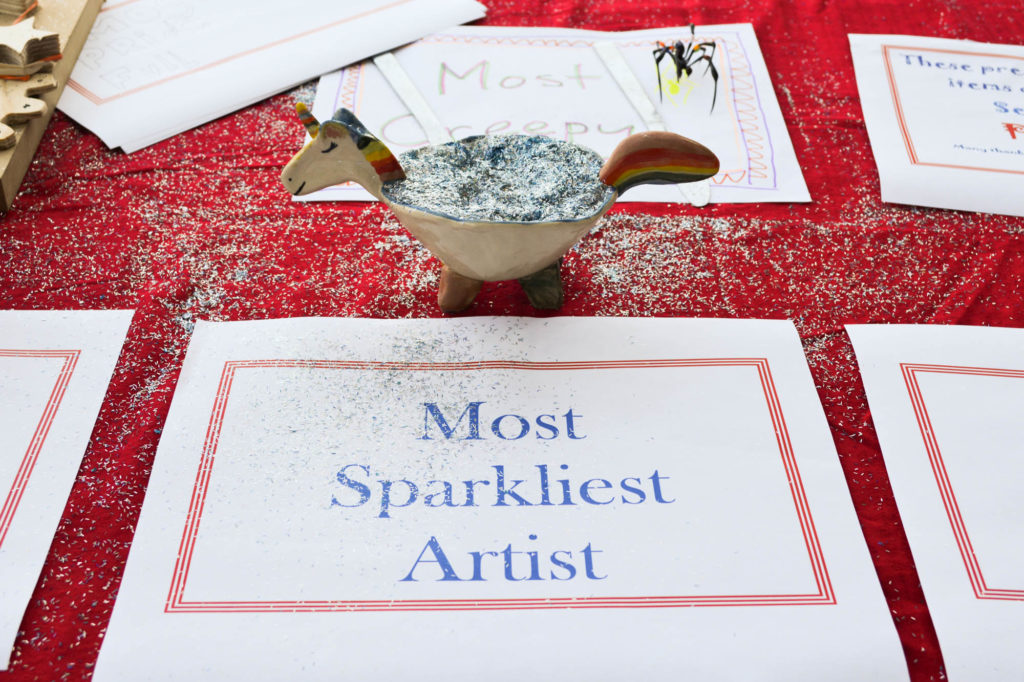
8:15 PM – Awards were given out to parade participants in a variety of silly and less-silly categories including “Over the Rainbow,” “Most Industrious,” “Dirtiest Clothes,” “Most Patriotic,” and “Most Sparkliest Artist.” Each award was handmade by students and instructors in Penland’s workshops.
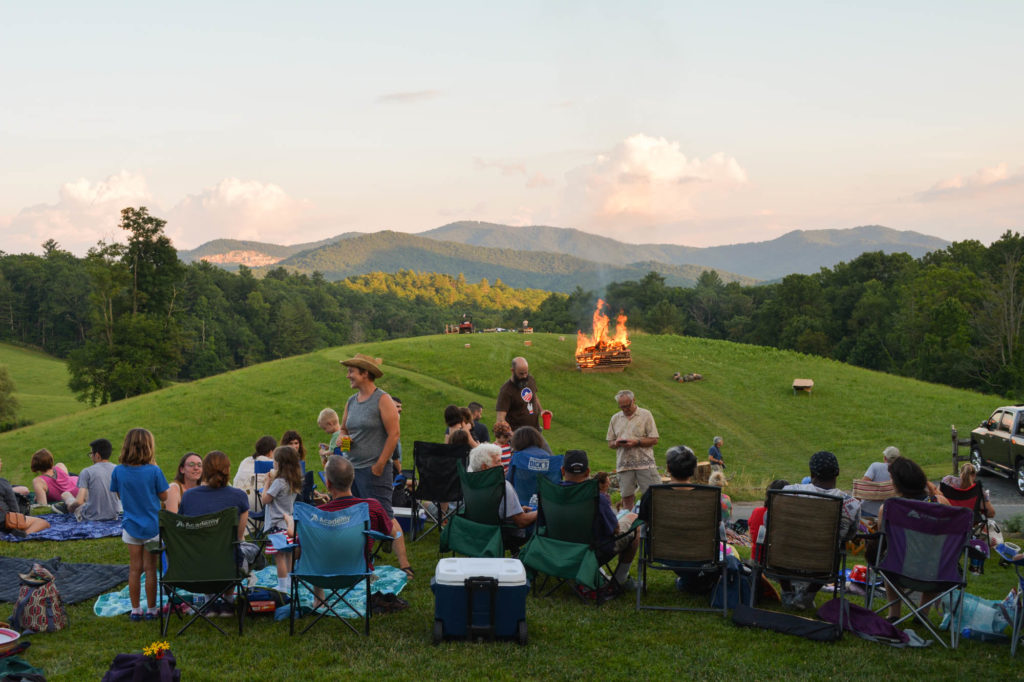
8:37 PM – More picnicking and relaxing went down on the lawn while the sun set over the mountains. A bonfire burned out on the knoll, ready to ignite the bottle rockets that accompany the end of the fireworks show.
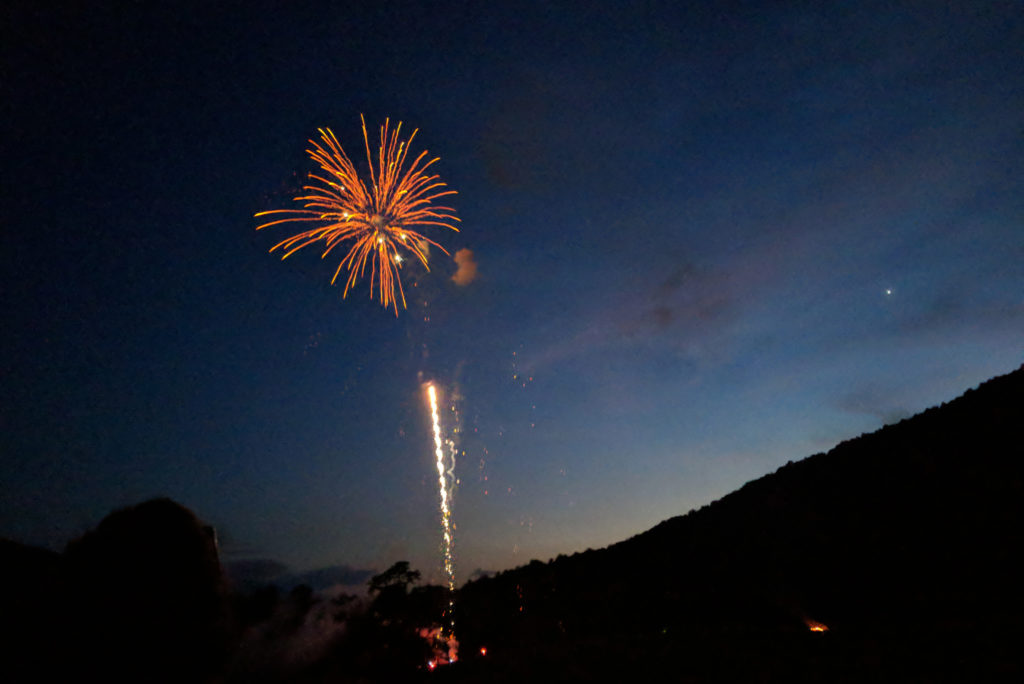
9:28 PM – The first colorful explosions lit up the sky. Oohs and aahs quickly followed.
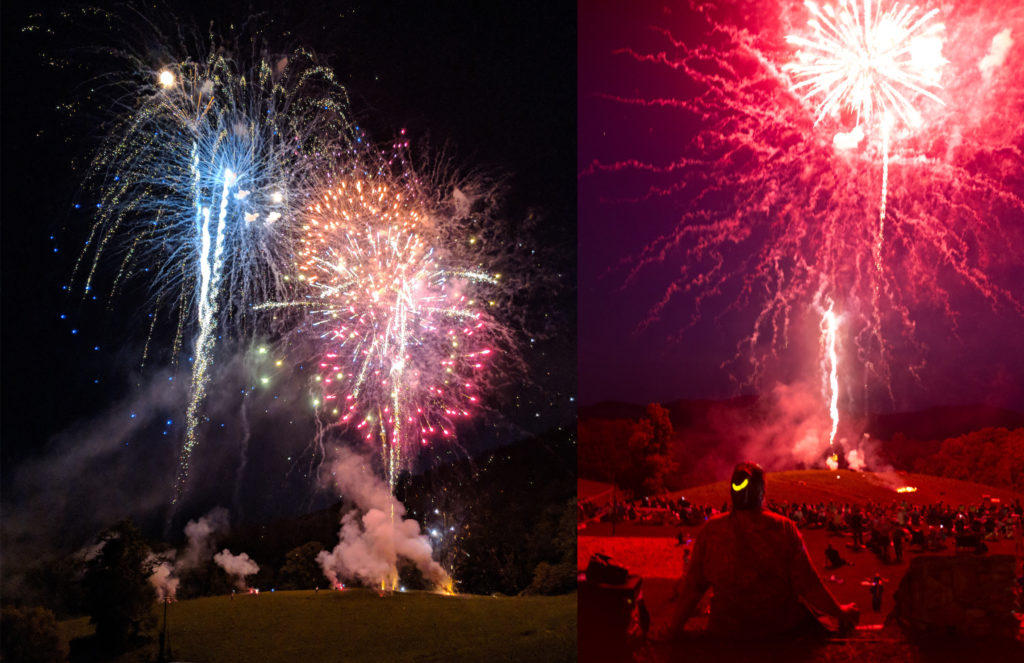
9:42 PM – The entire Penland campus burst into screams and applause as the fireworks reached their finale and 20,000 bottle rockets shot towards the sky. Dave and his crew really know how to put on a show, and dozens of folks commented that this year’s was the best one yet.
A huge thank you to everyone who came out to celebrate creativity and community with us! Let’s do it again next year.
See even more photos over on our Facebook album of the 2018 parade.


